Urban Development Sustainability of



































3,200/page RM
3,200/page RM
This one-time-only special rate o er is for new advertisers. Space availability is subject to booking on a first-come-first-served basis. Clients will provide ready-to-print artwork in PDF format with 300dpi.
Full page: 210mm x 285mm, 5mm extra bleed sizes for 4-sided with crop mark.
Advertising space must be utilised before 30 June 2023.
*Please note that the above rate will be subjected to 6% SST. For overseas advertisers, an additional 25% will be charged.
Rate shown above excludes 15% advertising agency commission.
Payment term: Full advance payment.
Artwork submission deadline is on (or before) the 1st week of the prior month of publication.
After the material deadline, no cancellation or alteration to the advertisement will be entertained.
Any cancellation after signing the advertising order will result in a 50% penalty charge.
The publisher reserves the right to edit, revise or reject any advertisement deemed unsuitable or inappropriate.
Name of Company:
Address:
JURUTERA has an estimated readership of 200,000 professionals. Our esteemed readership consists of certi ed engineers, decision making corporate leaders, CEOs, government o cials, project directors, entrepreneurs, project consultants, engineering consulting rms and companies involved with engineering products and services.


Tel: Email Address: Fax: Contact Person (s):
Publica�on month/s:
Company’s Stamp & Authorised Signature Date
YANG DIPERTUA / PRESIDENT
Ir. Prof. Dr Norlida bt Buniyamin
TIMBALAN YANG DIPERTUA / DEPUTY PRESIDENT
Ir. Prof. Dr Jeffrey Chiang Choong Luin
NAIB YANG DIPERTUA / VICE PRESIDENTS
Ir. Yau Chau Fong, Ir. Mohd Aman bin Hj. Idris, Y. Bhg. Dato’ Ir. Ahmad Murad bin Omar, Ir. Chen Harn Shean, Ir. Mohd Khir bin Muhammad, Ir. Prof. Dr Tan Chee Fai, Ir. Abdul Razak bin Yakob
SETIAUSAHA KEHORMAT / HONORARY SECRETARY
Ir. Prof. Dr Zuhaina binti Zakaria
BENDAHARI KEHORMAT / HONORARY TREASURER

Ir. Dr Lee Yun Fook
BEKAS YANG DIPERTUA TERAKHIR / IMMEDIATE PAST PRESIDENT
Ir. Ong Ching Loon
BEKAS YANG DIPERTUA / PAST PRESIDENTS
Y.Bhg. Dato’ Ir. Dr Gue See Sew, Y.Bhg. Dato’ Paduka Ir. Keizrul bin Abdullah, Y.Bhg. Academician Tan Sri Dato’ Ir. Prof. Dr Chuah Hean Teik, Y.Bhg. Dato’ Ir. Lim Chow Hock, Ir. Dr Tan Yean Chin, Ir. David Lai Kong Phooi
WAKIL AWAM / CIVIL REPRESENTATIVE
Ir. Yap Soon Hoe
WAKIL MEKANIKAL / MECHANICAL REPRESENTATIVE
Ir. Dr Aidil bin Chee Tahir
WAKIL ELEKTRIK / ELECTRICAL REPRESENTATIVE
Ir. Francis Xavier Jacob
WAKIL STRUKTUR / STRUCTURAL REPRESENTATIVE
Ir. Gunasagaran Kristnan
WAKIL KIMIA / CHEMICAL REPRESENTATIVE
Ir. Dr Chong Chien Hwa
WAKIL LAIN-LAIN DISPLIN / REPRESENTATIVE TO OTHER DISCIPLINES
Ir. Assoc. Prof. Dr Wong Yew Hoong
WAKIL MULTIMEDIA DAN ICT / ICT AND MULTIMEDIA REPRESENTATIVE
Ir. Jeewa Vengadasalam
WAKIL JURUTERA WANITA / WOMEN ENGINEERS REPRESENTATIVE
Ir. Noorfaizah bt Hamzah
WAKIL BAHAGIAN JURUTERA SISWAZAH / YOUNG ENGINEERS SECTION REPRESENTATIVES
Mr. Muhammad Ashiq Marecan bin Hamid Marecan, Mr. Lim Yiren, Mr. Darshan
Balasubramaniam, Ms. Ong Ye Shian, Mr. Ooi Wei Chien, Mr. Naveen Kumar a/l Apparao, Ms. Anis Akilah bt Ameer Ali
AHLI MAJLIS / COUNCIL MEMBERS
Ir. Dr Chan Swee Huat, Ir. Ellias bin Saidin, Ir. Mohd Radzi bin Salleh, Dato’ Ir. Hj Anuar bin Yahya, Ir. Dr Teo Fang Yenn, Ir. Sundraraj A. Krishnasamy, Ir. Dr Siti Hawa bt. Hamzah, Ir. Assoc. Prof. Lee Tin Sin, Ir. Mah Way Sheng, Ir. Sreedaran Raman, Ir. Lee Cheng Pay, Ir. Dr Kannan a/l M. Munisamy, Ir. Dr Siow Chun Lim, Ir. Wong Chee Fui, Ir. Dr Hum Yan Chai, Ir. Tiong Ngo Pu, Ir. Rusnida binti Talib, Ir. Prof. Dr Lau Hieng Ho, Ir. Muhammad Azmi bin Ayub, Ir. Fam Yew Hin, Ir. Razmahwata bin Mohd Razalli, Ir. Simon Yeong Chin Chow, Ir. Dr Chan Seong Phun, Ir. Yam Teong Sian, Ir. Kwok Yew Hoe, Ir. Dr Lee Choo Yong
AHLI MAJLIS / COUNCIL MEMBERS BY INVITATION
Ir. Lai Sze Ching, YBhg. Dato’ Prof. Ir. Dr Mohd Hamdi bin Abd Shukor, YBhg. Dato’ Ir. Nor Hisham bin Mohd Ghazali
PENGERUSI CAWANGAN / BRANCH CHAIRMAN
1. Pulau Pinang: Ir. Bernard Lim Kee Weng
2. Selatan: Ir. Thayala Rajah s/o Selvaduray
3. Perak: Y.Bhg. Dato’ Sri Ir. Liew Mun Hon
4. Kedah-Perlis: Ir. Roshasmawi bin Abdul Wahab
5. Negeri Sembilan: Ir. Shahrin bin Amri
6. Kelantan: Ir. Nik Ab. Hadi bin Hassan
7. Terengganu: YBhg. Dato’ Ir. Wan Nazari bin Wan Jusoh
8. Melaka: Ir. Ong Yee Pinn
9. Sarawak: Y.Bhg. Dato’ Ir. Janang Anak Bongsu
10. Sabah: Ir. Willy Chin Tet Fu
11. Miri: Ir. Chong Boon Hui
12. Pahang: Ir. Ab Rahman bin Hashim
AHLI JAWATANKUASA INFORMASI DAN PENERBITAN/ STANDING COMMITTEE ON INFORMATION AND PUBLICATIONS 2022/2023
Pengerusi/Chairman: Ir. Abdul Razak bin Yakob
Naib Pengerusi/Vice Chairman: Ir. Wong Chee Fui
Setiausaha/Secretary: Ir. Dr Hum Yan Chai
Ketua Pengarang/Chief Editor: Ir. Abdul Razak bin Yakob
Pengarang Prinsipal Buletin/ Principal Bulletin Editor: Ir. Dr Siow Chun Lim
Pengarang Prinsipal Jurnal/Principal Journal Editor: Ir. Dr Teo Fang Yenn
Pengerusi Perpustakaan/Library Chairman: Ir. Dr Kannan a/l M.Munisamy
Ahli-Ahli/Committee Members: Ir. Dr Bhuvendhraa Rudrusamy, Ir. Ong Guan Hock, Ir. Lau Tai Onn, Ir. Dr Oh Seong Por, Ir. Yee Thien Seng, Dr Sudharshan N. Raman, Ir. Dr Lai Khin Wee, Ir. Dr Lee Tin Sin, Ir. Yap Soon Hoe, Mr. Alex Looi Tink Huey, Dr Mohamad Shakri bin Mohmad Shariff, Ir. Mohd Razmi Ziqri bin Ahmad Shukri, Ir. Dr Siti Hawa Hamzah, Ir. Lee Chang Quan, Ms. Michelle Lau Chui Chui, Ir. Jeewa S/O Vengadasalam, Ir. Rusnida binti
Talib, Ir. Dr Lee Choo Yong, Ir. Ts. Dr Tan Kim Seah, Mr. Muhd Ashiq Marecan bin Hamid Marecan
LEMBAGA PENGARANG/EDITORIAL BOARD 2022/2023
Ketua Pengarang/Chief Editor: Ir. Abdul Razak bin Yakob
Pengarang Prinsipal Buletin/ Principal Bulletin Editor: Ir. Dr Siow Chun Lim
Pengarang Prinsipal Jurnal/Principal Journal Editor: Ir. Dr Teo Fang Yenn
Ahli-ahli/Committee Members: Ir. Lau Tai Onn, Ir. Ong Guan Hock, Ir. Yee Thien Seng, Ir. Dr Oh Seong Por, Dr Sudharshan N. Raman, Ir. Dr Lai Khin Wee
Secretariat: Janet Lim, Nur Illyarnie bte Rosman
THE INSTITUTION OF ENGINEERS, MALAYSIA
Bangunan Ingenieur, Lots 60 & 62, Jalan 52/4, P.O. Box 223, (Jalan Sultan), 46720 Petaling Jaya, Selangor Darul Ehsan. Tel: 603-7968 4001/4002 Fax: 603-7957 7678
E-mail: sec@iem.org.my Homepage: http://www.myiem.org.my










DIMENSION PUBLISHING SDN. BHD. [ 199701034233 (449732-T) ]
Level 18-01-02, PJX-HM Shah Tower, No. 16A, Persiaran Barat, 46050 Petaling Jaya, Selangor Darul Ehsan, Malaysia.
Tel: +(603) 7493 1049 Fax: +(603) 7493 1047
E-mail: info@dimensionpublishing.com Website: www.dimensionpublishing.com
CHAIRMAN ROBERT MEBRUER
CEO/PUBLISHER PATRICK LEUNG


GENERAL MANAGER
SHIRLEY THAM ● shirley@dimensionpublishing.com
HEAD OF MARKETING & BUSINESS DEVELOPMENT
JOSEPH HOW ● joseph@dimensionpublishing.com
PRODUCTION EDITOR
TAN BEE HONG ● bee@dimensionpublishing.com
CONTRIBUTING WRITERS
PUTRI ZANINA ● putri@dimensionpublishing.com
HANNA SHEIKH MOKHTAR ● hanna@dimensionpublishing.com
SENIOR GRAPHIC DESIGNER
SOFIA HANIS ● sofia@dimensionpublishing.com
GRAPHIC DESIGNER
NICOLE THENG ● nicole@dimensionpublishing.com
ADVERTISING CONSULTANTS
THAM CHOON KIT ● ckit@dimensionpublishing.com
ACCOUNTS CUM ADMIN EXECUTIVE
YEN YIN ● yenyin@dimensionpublishing.com
For advertisement placements and subscriptions, please contact:
DIMENSION PUBLISHING SDN. BHD. [ 199701034233 (449732-T) ]
Level 18-01-02, PJX-HM Shah Tower, No.16A, Persiaran Barat, 46050 Petaling Jaya, Selangor Darul Ehsan, Malaysia. Tel: +(603) 7493 1049 Fax: +(603) 7493 1047
E-mail: info@dimensionpublishing.com
Subscription Department
E-mail: info@dimensionpublishing.com
JURUTERA is published and printed monthly by Dimension Publishing Sdn. Bhd.
JURUTERA MONTHLY CIRCULATION: OVER 50,000 MEMBERS
Submission or placement of articles in JURUTERA could be made to the:-
Chief Editor
THE INSTITUTION OF ENGINEERS , MALAYSIA (IEM) Bangunan Ingenieur, Lots 60 & 62, Jalan 52/4, P.O. Box 223 (Jalan Sultan), 46720 Petaling Jaya, Selangor.
Tel: +(603) 7968 4001/4002 Fax: +(603) 7957 7678
E-mail: pub@iem.org.my or sec@iem.org.my
IEM Website: http://www.myiem.org.my
© 2020, The Institution of Engineers, Malaysia (IEM) and Dimension Publishing Sdn. Bhd.
The publication has been compiled by both IEM and Dimension with great care and they disclaim any duty to investigate any products, process, services, designs and the like which may be described in this publication. The appearance of any information in this publication does not necessarily constitute endorsement by IEM and Dimension. There is no guarantee that the information in this publication is free from errors. IEM and Dimension do not necessarily agree with the statement or the opinion expresssed in this publication.
COPYRIGHT
JURUTERA Bulletin of IEM is the official magazine of The Institution of Engineers, Malaysia (IEM) and is published by Dimension Publishing Sdn. Bhd. The Institution and the Publisher retain the copyright over all materials published in the magazine.
No part of this magazine may be reproduced and transmitted in any form or stored in any retrieval system of any nature without the prior written permission of IEM and the Publisher.
by Ir. Azhar bin Azmi Chairman, IEM Urban Engineering Special Interest GroupWhat kind of place would you find ideal to live in? One that is comfortable to reside in, one that is convenient for work and leisure, one that has a safe and healthy environment or one that is productive and affordable.
The theme for the April issue of JURUTERA, Sustainability of Urban Developments, encapsulates all these needs and concerns. In this issue, the government’s point of view on the subject is discussed, including the policy of Sustainability Malaysia 2030 and the plan to achieve this goal.
Research and studies to address urban sustainability problems should be at the forefront of achieving the goals. We share the studies on Sustainable Urban-scale Planning which emphasise the need to address the weather and air quality impacts. With frequent urban flash flood occurrences becoming a critical issue, research on Urban Flash Flood Prediction proposes a new approach to predicting flash floods to account for the amount of runoff.
Private sector involvement is important to incorporate urban sustainable development in products and services. We share the developer’s perspective using an actual case study and explore related facilities such as water treatment plants which are important to public health and sustainability.
Organisations at all levels as well as individuals have a role in ensuring the sustainability of our cities, towns and villages as these are where we live in and so, should be responsible for.
Like it or not, we are getting more urbanised, especially in a developing nation such as Malaysia. While urbanisation is widely equated to uplifting the quality of human life, we have to ensure that such development is taking shape in a sustainable manner.
While we cannot directly attribute the aggressive flash floods which are hitting us in the East Coast all the way to the south, to urbanisation, we as engineers have to be ever more cautious in planning and executing the various developments which translate to sustainable urbanisation.
In this April issue, the Urban Engineering Special Interest Group brings us a compilation of articles deliberating on the issue of sustainable urbanisation.
As I am penning this note, the familiar voice whispering reminders of Yusof Taiyoob is playing repeatedly in my mind. This means Hari Raya is around the corner. To our Muslim readers, Selamat Hari Raya Aidilfitri!

Under Sustainable Malaysia 2030, the Ministry of Natural Resources, Environment & Climate Change (NRECC) has listed 4 thrusts and 35 initiatives in the Environmental Sustainability in Malaysia 2020-2030 Plan, such as air quality, sewerage system, flood risk management, low carbon cities, low carbon mobility, etc. Its Minister, YB Tuan Nik Nazmi Nik Ahmad, tells us more.
Can urban sustainability help attain environmental sustainability in Malaysia? How important is this for the people’s health, mental wellbeing and hygiene?

Nik Nazmi: According to the latest estimation from the Department of Statistics Malaysia (DOSM), 75% of our total population live in urban areas. It is estimated that this figure will rapidly increase to 85% by 2040. In fact, Malaysia’s current urbanisation rate is among the highest in South-East Asia.
This high urbanisation rate poses challenges in the form of poor air and water quality, water supply disruptions, inadequate sanitation, inefficient waste management and high energy consumption. The higher consumption in the urban areas has naturally resulted in a higher amount of emission and waste and this is a clear threat to the environment.
Environmental sustainability is about meeting the needs of the present without compromising
the ability of future generations to meet their own needs. Thus, should Malaysia’s urbanisation rate be on track as estimated, there is no other way to secure the future than to strive for urban sustainability.
Aside from the current initiatives taken by the Ministry, smart and green designs, technologies and solutions in sustainable cities may be key to environmental sustainability in Malaysia. Urban development must consider innovative approaches and solutions as the means to mitigate and adapt to the environmental threat and climate change impact.
Today’s urban dwellers are already exposed to higher risks of morbidity, mortality and reduced well-being. This is where sustainability becomes paramount. Achieving urban sustainability is not only limited to reducing environmental impact but it’s also through the promotion of physical and psychological wellbeing and healthy communities.
Minister of Natural Resources, Environment and Climate Change, he has also served as the MP for Setiawangsa since 2018 and as a Vice-President of KEADILAN.
Nik Nazmi studied at the Malay College Kuala Kangsar and read law at King’s College London. He was elected to the Selangor State Legislative Assembly in 2008, having won the Seri Setia constituency and was the youngest successful candidate.
Re-elected to Seri Setia in 2013, he was appointed as a Deputy Speaker and he then held the position of Selangor’s EXCO for Education, Human Capital Development, Science, Technology and Innovation.

Tell us about the main focus of the Environmental Sustainability in Malaysia 2020-2030 Plan agenda concerning urban sustainability. What is the set target for 2030?
Nik Nazmi: The urban sustainability aspiration involves cross-ministerial collaboration and effort. NRECC works closely with other ministries and government agencies, primarily the Ministry of Local Government Development, to implement initiatives under the portfolio of each organisation.
From 2020 to 2023, the main focus of NRECC’s Environmental Sustainability Plan concerning urban sustainability is water supply and sewerage services, flood risk management, carbon emission and green growth.

As for water resources, the Ministry is targeting an increase of 25% in clean rivers by 2030, compared to 2020. On the National River Trail, this initiative, among others, is to ensure the sustainability and beauty of rivers while controlling river pollution activities and stimulating economic activities such as river ecotourism. The Ministry is targeting 10,000km of river trail by 2030, compared to 787.3km in 2022.
By 2030, the Ministry aims to increase 95% connection to sewerage services for domestic households in 11 major cities as well as to increase public health protection and to
promote environment and water source sustainability.
To ensure improved air quality, NRECC aims to reduce the concentration of PM2.5 (µg/m3) pollutants in ambient air to 5% by 2030, compared to the concentration of pollutants in 2020.
Considering the need to balance economic growth with environmental protection, the implementation of the country’s Roadmap Towards Zero Single-Use Plastics and Plastics Sustainability Roadmap will tackle plastic waste pollution both on land and in the sea.
Through these roadmaps, the Ministry will divert plastic waste from landfills and reduce land-based plastic pollution in the environment and marine ecosystems as well as implement mandatory extended producer responsibility to transition towards a circular plastic economy by 2030.
Apart from this, NRECC, through the Malaysian Green Technology & Climate Change Corporation (MGTC), has executed strategies to transform our cities into low carbon cities under the Low Carbon Cities Framework. The Ministry’s target is 200 low carbon cities by 2030, compared to 34 in 2022.
The Ministry is also looking at the number of Electric Vehicle Charging Stations (AC and DC charges). Low Carbon Mobility Blueprint (LCMB)
2021-2030 will assess the best options in energy and greenhouse gases (GHG) mitigation planning in the transport sector, in particular land transport, using scenario analyses of a businessas-usual case and similarly for 2030.
What are the contributions and achievements made to date?
Nik Nazmi: Cities are the main engines for dynamic economic growth and the focal points of most of the population. However, the process of urbanisation has contributed significantly to the increase in GHG emissions. So, fostering urban development in the most sustainable manner can help reduce energy demand, consumption and GHG emissions.
For this reason, the Ministry has developed roadmaps and blueprints towards environment sustainability, including that for urban sustainability. The Low Carbon Mobility Blueprint was developed in 2021 with the aim to reduce total primary energy supply and consumption as well as GHG in the transport sector, particularly land transport, by 2030.
The National Low Carbon Cities Framework 2017 (LCCF) was also developed to transform our cities into low carbon cities while pushing the low carbon development in Malaysia to the next level. The targeted outcome includes GHG emission reduction at cities/municipal level.






Malaysia’s Roadmap Towards Zero Single-Use Plastics 2018-2030 was introduced as a policy guide for all stakeholders to take a uniform and holistic approach to the plastics value chain in addressing singleuse plastics pollution in Malaysia. The action plans were designed taking into consideration the need to balance economic growth with environmental protection.
This roadmap focuses on not only advocating sustainable practices among Malaysians by introducing pollution charges on plastic bags but also on the industry transition from a linear business to a circular economy business model. The outcome includes plastic waste diversion from landfills and land-based plastic pollution in the environment and marine ecosystem.
To support the plan, NRECC also launched the Plastics Sustainability Roadmap in December 2021, which will shift the plastics industry from a linear business model to a more sustainable circular ecosystem. This new ecosystem will cover a whole range of elements, from design innovation, supply chain collaboration, high value recycling industry and resource efficiency to the accountability of manufacturers and brand owners in managing end-
of-life impacts of their products to ensure the circularity of the plastic value chain.
Compare and contrast what Malaysia has done with that of other developing countries.
Nik Nazmi: Developing countries are bearing the brunt of climate change and environmental decline. Malaysia shares almost similar environmental challenges with other developing countries, especially those in the South-East Asian region, such as rising temperatures, increase in rainfall intensity and duration to severe floods and threats to biodiversity.
Over the years, ASEAN has demonstrated its commitment to addressing climate change, including through multi-sectoral dialogue and relevant activities involving key partners in various sectors, such as agriculture, forestry, energy, transport, disaster management and finance.
In terms of climate ambition, the world had pledged to keep global warming to below 1.5oC, as defined in the 2015 Paris Agreement. Malaysia joined the increasing number of developed countries in the net zero emission pledge by 2050.
Almost all members of ASEAN have pledged to attain net zero

emissions. Of the 10 ASEAN member countries, 8 have announced national targets to achieving net-zero GHG emissions or to become carbon neutral by 2050, corresponding to the 1.5°C target set by the Intergovernmental Panel on Climate Change (IPCC). The 2 exceptions are Indonesia, which has committed to net zero by 2060 while The Philippines is the only ASEAN country yet to commit to a net-zero target.
Indonesia’s policy makers have set targets to embrace clean energy on its way to achieving net zero emissions by 2060. Thailand has committed to reach carbon neutrality by 2050 and net zero GHG emissions by 2065. Thailand also pledged to enhance the Nationally Determined Contributions (NDCs) to reduce GHG emissions by 30%-40% in 2030 from its previous target of 20- 25%, in order to attain carbon neutrality and net zero goals.
Malaysia has focused its efforts on moving towards a green economy and working closely with businesses in low carbon strategies. We have taken a step ahead in climate action through the launch of Bursa Carbon Exchange (BCX) on 9 December 2022. This is a voluntary carbon market and the world’s first syariahcompliant carbon exchange. Such a carbon market mechanism is relatively new among developing countries, especially in the SouthEast Asia. This initiative is pivotal in facilitating businesses in transitioning to a green economy and meeting global standards for a sustainable supply chain.
Water resources management is one of the challenging areas for developing countries. Malaysia is working on strategies to increase efficiency in managing water resources through river clean-up initiatives, increasing water resources margin reserves, establishing an integrated river basin management plan and water resources/water supply-related research.
A similarity in water resources management actions can be
observed in two of our neighbouring countries, Thailand and Indonesia. An approach shared by Malaysia and other developing countries in this area is cooperation with developed countries and nonprofit organisations in adopting mechanisms and solutions in river clean-up.
One of the biggest environmental threats the world is facing is pollution from waste mismanagement, including plastics. In terms of a national action plan to address this issue, Malaysia is leading the way with our roadmaps and blueprints on plastic sustainability. To date, developing countries such as Myanmar, Thailand and Indonesia have also established roadmaps with strategies tailored to their country’s circumstances.
Malaysia has forged cooperation with other member countries to combat pollution, including that from plastic waste under the ASEAN Regional Action Plan for Combating Marine Debris.
Regardless of national circumstances and level of readiness, Malaysia is also actively cooperating with other developing countries, especially those in the ASEAN region, to address environmental threats and to tackle climate change.
Speaking of the recent threat to the urban livelihood, which is flooding, what are the plans and status of preparedness by NRECC or other government agencies to prevent this?
Nik Nazmi: NRECC is always ready and working to improve weaknesses that have been identified to ensure such situations do not recur. The government is implementing action plans, including drainage maintenance works through its Integrated Flood Management approach, developing structures and designs based on the “make room for water” concept such as upgrading the flood management system, beaches and main rivers as well as increasing
the level of protection in the design of drainage infrastructure.

The government strives to reduce the risk of flooding throughout the country with the implementation of the Flood Mitigation Plan (Rancangan Tebatan Banjir or RTB). To date, there have been as many as 40 various projects related to flood mitigation and environmentally friendly drainage. The implementation of RTB projects means more residents will be protected from the effects of floods.
Through the Department of Irrigation & Drainage (JPS) and the Department of Environment (DOE), NRECC has taken the following steps to ensure that rivers are not polluted:
1. Implementing an Integrated River Basin Management (IRBM) approach. This requires the involvement of all stakeholders to prevent pollution incidents, ensure clean and sufficient water sources, reduce the risk of flooding and improve environmental conservation. The IRBM plan also offers recommendations to state governments on how to deal with strategic issues in order to be in line with the goal of environmental sustainability.
2. Implementing the National River Trail Development Programme (DSK), a Nature-Based-Solutions (NBS) approach to dealing
with illegal waste disposal. The programme increases public awareness of the beauty of rivers and increases the number of visitors to the riverside for leisure activities which, in turn, can indirectly prevent illegal waste disposal activities.
3. Enhancing the enforcement of AKAS (Akta Kualiti Alam Sekeliling) 1974 and the regulations under it through periodic monitoring and inspection of premises located upstream of water sources which produce waste such as effluents, toxic and hazardous waste. This is done through integrated operations involving various enforcement agencies on identified causes.
4. Carrying out special operations such as enforcement programmes focusing on specific sources of pollution, specific sectors or types of industries, specific areas or hot spots which have risks of causing pollution. In addition, monitoring through patrols and drones in areas at risk of pollution is also enhanced.
5. Taking firm legal action against non-compliance detected during enforcement investigations.
6. Implementing awareness programmes for the general public, those who may be the
sources of pollution such as industries and development project developers, to increase their level of awareness on the importance of protecting the environment and water resources.
7. Preparing an Environmentally Friendly Drainage Master Plan for major cities to be used as a guide and reference for the upgrading and building of drainage systems as well as planning future development that is more systematic and sustainable to reduce the risk of flash floods and to control pollution due to development.
Nik Nazmi: Stakeholders involve many parties, including the local community, the public, traders, property owners, government agencies, security forces, NGOs and others. The cooperation of all parties is very important to ensure we can overcome the flood issue together. It starts with the public not throwing garbage into rivers as this is a main cause of flash floods.
For new development in any particular area, the developer must comply with all the guidelines and development acts set by the government, especially the local authorities and JPS, which cover planning permission, compliance with the requirements and conditions of the Erosion & Sediment Control Plan (ESCP) as outlined in the Urban Stormwater Management Manual (MSMA) and so on.
For agencies directly involved in flood management, JPS has taken into account the IRBM and Integrated Flood Management (IFM) approaches in flood management plans. The approach will use strategies and programmes designed for and to be implemented efficiently and effectively by combining structural methods, non-structural methods
and post-disaster activities in managing and controlling floods to ensure minimal negative impact on the public.
The involvement of stakeholders in preventing floods and the role of communities in preparing for floods are important to reduce the loss of lives and damage to property so that social and economic activities can continue for the well-being of the people.
Nik Nazmi: One of the main causes of flooding in Malaysia is the problem of uncontrolled garbage dumping as this will block drainage systems and obstruct the water flow in rivers, resulting in flooding. Therefore, all citizens need to change to a first-class mentality, one that is responsible, ethical, progressive and has a high awareness of cleanliness, the beauty of the environment and environmental sustainability. The cooperation of all parties is essential in the effort to realise this.
The Ministry has launched the National River Trail Programme with objectives that include ensuring the sustainability and beauty of rivers while controlling activities that can cause river pollution. The existence of trails by the river will encourage leisure activities such as jogging, picnicking, fishing and cycling. The presence of people in the area will deter irresponsible parties from turning the river into a dumping ground for rubbish, while potentially contributing to eco-tourism.
Nik Nazmi: Climate variability has increased the frequency of severe floods and prolonged drought periods in Malaysia. To maintain longterm viability, the Ministry’s strategic planning targets development through the concept of creating resilience.
This concept can integrate the elements of land use planning, development and management of water resources through the Urban Stormwater Management Manual (MSMA), Sustainable Drainage Master Plan (PISMA), Integrated River Basin Management (IRBM) Plan, Flood Risk Map, Flood Hazard Map and the Integrated Coastal Management Plan.
The IRBM Plan is supported by the Urban Stormwater Management Manual and focuses on potential flooding by providing technical guidelines pertaining to drainage and water quality control. The preparation of Stormwater Management Plans is another initiative to assist local authorities in their efforts to provide basic drainage and stormwater management infrastructure.
PISMA identifies low-lying areas, flood prone areas and proposes stormwater infrastructure implementation; the Integrated Flood Management (IFM) plan has been adopted for efficient use of flood plains to minimise loss of life and property. This approach integrates both structural and non-structural measures. Structural measures, which involve flood mitigation projects, will help to significantly reduce the risk of flooding and directly benefit millions of people living in the flood plains.
Meanwhile, non-structural approaches involving Flood Hazard Maps and Flood Risk Maps have been developed to identify high-risk, flood-prone areas requiring flood mitigation. This information also serves as a guide in the planning and execution of future development and for disaster management by related agencies.
Even though the plans have been tabled and implemented, the government continues to look for ways to improve flood mitigation and adaptation methods. It is a continuous effort, one that should be reviewed occasionally.





















JURUTERA has an estimated readership of 200,000 professionals. Our esteemed readership consists of certified engineers, decision making corporate leaders, CEOs, government officials, project directors, entrepreneurs, project consultants, engineering consulting firms and companies involved with engineering products and services.

Our business partners can be assured that their products and services will be given the circulation and exposure they deserve, thus maintaining a sustained advertising presence to our core readers of decision-making engineers and technical experts. Our website offers an even wider market reach, with added international presence, aided by our international affiliation with official engineering bodies all over the world. Our online and offline advertising features such as banner advertising, article sponsorship and direct e-mail announcements have proven to be successful marketing strategies that will set the businesses of our partners apart from their competition.

Special Position: +15%
Overseas Advertiser: +25% (Full Advance Payment Required) All prices shown above exclude Computer to Plate (CTP) charges

*Please note that the above prices will be subjected to SST *Advertising rates displayed do not include 15% advertising agency commission

 Written and Prepared by:
Written and Prepared by:
In cities, natural resources are often compromised for social foundation to accommodate the large population. Economically growth-driven cities are often perceived as populated, congested, and polluted but it does not stop there. The population in urban areas continues to grow, sprawling into greater conglomerations. Are current cities, with their resources, capable of supporting the growing population and, at the same time, maintaining the quality of life?
A doughnut model (Figure 1) was proposed by British economist Kate Raworth[1] as a “regenerative and distributive” economic model that would strike a balance between natural resources and social requirements. It is a space that lies below the “ecological ceiling” where the natural ecosystem can still regenerate itself after

being utilised for development while above the “social foundation” where the human basic needs are met on energy, water, food, health, and all. Unlike the commonly known three pillars of sustainable development, namely economic, social and environmental, the model has laid these out into interconnected relationships with their implications if any of those have been neglected.
In early times, humans commonly settled in locations where the community had easy access to food and resources while at the same time, could protect themselves from enemies. The growth in population and industry within these locations, which later evolved into urbanised areas, made the community more vulnerable to environmental challenges. For example, human settlements were commonly located in basins or adjacent to mountains for defence purposes. Such sheltered terrain, however, was less conducive for the ventilation of the airflow and caused bad air quality[2]. In other words, with increased atmospheric pollutant emission from human activities in cities, it became more difficult for the pollutants to be dispersed and diluted. Another prominent location of human settlement was proximity to water bodies, which was convenient for access to food and water resources as well as transportation. However, this tended to expose dwellers to additional natural hazards such as flooding and tsunami. This article will scrutinise the environmental threat faced in Malaysia and its cities as well as potential solutions to it.
Weather conditions: While global climate change has become one of the big challenges now and in the future, Malaysia, a tropical country, is most prone to weather conditions related to temperature and moisture. As we experience warm temperature throughout the year, cold is
not a big problem as compared to high temperature (also known as extreme temperature) which has occurred in the country several times in history.

In 2015, when the extreme El-Niño Southern Oscillation (ENSO), a mesoscale hot and dry anomaly, struck, the temperature anomaly based on Oceanic Niño Index (ONI) was recorded at 2.6oC, while a typical ENSO is declared when the ONI is higher than 0.5oC. The weather anomaly also affected the moisture distribution in Malaysia. The persistent heat and dryness caused extreme fires to occur and deteriorated the regional air quality. Hence, the economy and public health were further affected.
Kuala Lumpur, the capital city, has extended to its adjacent state, Selangor. It is known as Klang Valley or Greater Kuala Lumpur and more recently, the Kuala Lumpur Extended Mega Urban Regions (KLEMUR) which includes the Negeri Sembilan state. Here onwards, we will use “Klang Valley” terms for urban agglomeration.
Klang Valley is located on the western side of the peninsula between the Straits of Malacca on the west and Titiwangsa Highland on the east (Figure 2). It is an example of the basin-like urban topography, not to mention the Barisan Mountains, Sumatra, further west. The urban heat island effect is a condition that occurs in developed cities where the temperature is higher compared to the rural regions. Although KLEMUR experiences a tropical climate, it is not exempt from the influence of urban heat islands.

Our products:



Urban heat island formation is created by urban planning – paved roads and concrete jungles with materials that do not regulate heat and moisture unlike vegetation and natural surfaces. Conventional urban materials have either highly reflective solar radiation like glass and white surfaces which increase the ambient temperature or have high heat retention capability such as black and paved surfaces which increases surface temperature.
The country receives a large amount of rain throughout the year; however, the urban surface cannot absorb rainwater which will then directly run off to the nearest water body. In cases of thunderstorms, when the amount of runoff has exceeded the capacity of the drainage system, urban flooding will occur and while the moisture retained within the ground has reduced, there is more moisture available on the surface or water body to form water vapour under hot temperatures.
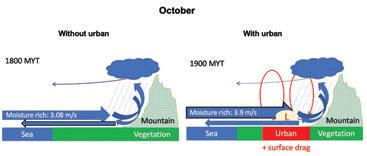





Research shows that the urban heat island effect increases Klang Valley temperatures by 0.9oC during the day and 1.9oC during the night[4]. Hot air rises, cold air sinks. When the hot air caused by urban heat islands rises, the air from the nearby regions will flow in to fill the void created. In the Klang Valley, the airmass from the Straits of Malacca matters. The formation of urban heat has influenced the sea-land breeze mechanism by increasing the wind flows and moisture influx near the coastal region (Figure 3) and moisture is, of course, a critical component for rain and thunderstorm to form.
Deterioration of air quality: In modern times, the urban cities have extended vertically to fit a high population into the limited land in city centres. The low sky view factor and narrow urban canopy reduce the ventilation rate within the buildings by slowing down the wind flow. Pollutants in the air, therefore, have a higher tendency to be trapped within the stagnant and narrow spaces where residents go about their daily chores or commute. It is notable to mention that Klang Valley is home to several large emission emitters such as industry clusters in Shah Alam, the port in Klang and international shipping lanes. The Straits of Malacca is one of the busiest arterial shipping lanes connecting the Indian Ocean and the Pacific Ocean (Figure 4).
In a period when the west coast of the peninsula experienced weak winds or weak wind vectors (for example on 16 February 2023), pollutants tended to accumulate. The primary air pollutant, nitrogen dioxide (NO2), was often considered one of the primary emitters from the sources.
Figure 5 shows a higher value of NO2 over the west coast where Klang Valley is located. Weak lines of shipping lanes (over the South China Sea) are also visible in Figure 5, though it cannot be seen clearly over the Straits of Malacca due to a higher concentration of other emission sources.

The geographical condition has exposed Klang Valley to these environment threats. Climate change or weather condition is a natural stress test to the urban design, growth and evolution. However, not all environmental threats are caused by external factors. For example, urban heat islands and flash floods are distinct weather conditions observed over the region due to urbanisation. For the realisation of sustainable urban cities, proper assessment and planning that takes into consideration the vulnerability to climate and air quality factors as well as the urban designs which alleviate the urban climate condition are required.
Sustainability indices: The formal assessment available is the Environmental Impact Assessment (EIA) Guidelines released by the Department of Environment (DOE) Malaysia. Among the guidelines, the EIA on Housing, New Township and Industrial Estate Development advises that impact assessment be conducted up to 5km from the project boundary while the project developer can extend beyond to cover the determined zone of impact[5]. Some other indexes are used as guidelines to evaluate the sustainability level of development in Malaysia but these are still on a voluntary basis (Table 1).
The assessment and adoption of sustainability indices on a building scale have become more known and practised by industry players because they are mandatory or are being supported financially. For example, projects certified as green buildings can be entitled to green tax incentives schemes such as investment tax allowance and
Green Building Index (GBI) PAM, ACEM
Malaysia Carbon Reduction and Environmental Sustainability Tool (MyCREST)

Malaysia Green Highway Index (myGHI)
Green road rating system (pHJKR)
Sustainable Infrastructure Rating Tool (Sustainable INFRASTAR)
Green Real Estate (GreenRE)
Non-residential buildings
JKR, CIDB New Buildings
JKR Highways
LLM Non-toll roads
CIDB Infrastructures
Buildings, Townships,
income tax exemption[7]. With the gradual maturity of the implementation of sustainable building, the subsequent work shall extend toward the urban and regional scale[6].
As mentioned earlier, the interaction of urban and climate is two-way: Climate influences the weather in urban areas while urban development itself also creates its own microclimate (small-scale climate conditions). A planning system that integrates all the urban-related information is necessary to understand the larger-scale problem such as weather. This is usually done through simulation software which inputs the information available such as land use, building geometry, building material, weather condition, etc to predict the spatiotemporal distribution of the heat, wind and other weather components. The urban climate modelling software is mainly built on the basis of computational fluid dynamics and can involve mesoscale processes like numerical weather prediction systems. The software is a more cost-effective approach to predicting the urban climate.
The planning of sustainable city development can apply the concept of “digital twins” where a replica of the physical city is created digitally. It has been used in the development of smart cities where the pre-fabrication, design and process of construction are carefully designed and planned at the beginning stage. The application of urban planning will be able to predict the condition of the urban area under different development and climate change projections. With active monitoring sensors available, it is able to incorporate up-to-date datasets and solve other problems apart from the weather, such as air quality, traffic, building energy and others.

European countries have started to explore the potential of digital twins for urban areas[8] where there are traffic models, air quality models and noise models (Figure 6). As Singapore has followed suit, this can be a
good reference for Malaysia as Singapore experiences a similar tropical climate. Under the Cooling Singapore project, the government has started to develop the Digital Urban Climate Twins to predict and mitigate the urban heat issues in an effort to improve the dweller’s outdoor thermal comfort and quality of life[9].
There is no one-size-fits-all solution. Such a planning tool is, of course, not an easy task to be applied as it may require huge amounts of heterogeneous local information on the urban designs or land use planning. It would a big leap ahead for the country if such a big amount of urban information is made available and can be utilised for data-driven decisions and planning for a better and more sustainable city for us to live in.
Note:
This paper was built on the foundation of [6] and permission had been obtained.
[1] Nugent, Ciara (2021) Amsterdam Is Embracing a Radical New Economic Theory to Help Save the Environment. Could It Also Replace Capitalism?. Time. https://time.com/5930093/amsterdamdoughnut-economics/?fbclid=IwAR3YjhzvbMRpMELb1VwwvJ79jZY W7_4FQOCTrwAmeQ6VV9J9OZC-1VOJMJE [accessed on 26 Feb 2021]
[2] Yang J et al (2021) Contribution of urban ventilation to the thermal environment and urban energy demand: Different climate background perspectives. Science of The Total Environment: 795: 148791. https:// doi.org/10.1016/j.scitotenv.2021.148791
[3] Yang F et al (2020) Changes and Regional Differences in Urban Land Areas on Both Banks of the Strait of Malacca Based on Remote Sensing, Sustainability 2020, 12(22), 9714. https://doi.org/10.3390/ su12229714
[4] Ooi MCG, Chan A, Subramaniam K, Morris KI, Oozeer MY. 2017. Interaction of urban heating and local winds during the calm intermonsoon seasons in the tropics. J Geophys Res Atmos 122: 1–25. doi: 10.1002/2017JD026690
[5] DOE (2020) https://enviro2.doe.gov.my/ekmc/wp-content/ uploads/2021/09/GP-1-Housing-New-Township-IndustrialEstate.pdf
[6] Ooi MCG and TS Yam (2022) Going Sustainable with Urban Environment Design, The Ingenieur: Magazine of the Board of Engineers Malaysia, 91: 6-13, KDN PP 11720/4/2013 (032270)
[7] GreenRE (2020) Malaysia’s Leading Green Building Certification Body. REHDA. Available online: https://greenre.org/ uploads/1/0/7/1/107142097/greenre_corporate_brochure_2020-aug. pdf [accessed on 17 Feb 2023]
[8] Raes et al (2021) DUET: A Framework for Building Interoperable and Trusted Digital Twins of Smart Cities. IEEE Internet Computing, 25 (3): 43-50. https://doi/org/10.1109/MIC.2021.3060962
[9] National Research Foundation, Hot Tech to Keep Singapore Cool, Singapore Prime Minister’s Office, Available online: https://www.nrf. gov.sg/features/features/page/0/hot-tech-to-keep-singapore-cool [accessed on 17 Feb 2023]

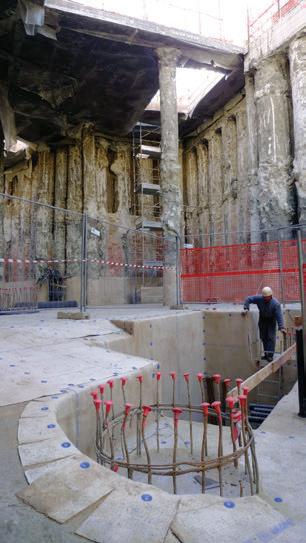


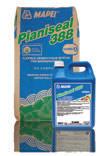











 Written and Prepared by:
Written and Prepared by:
The world is becoming increasingly urbanised. Since 2007, more than half the world’s population live in cities and this number is projected to rise to 60% by 2030 (UN Sustainable Development Goals, Goal 11). Cities and metropolitan areas are powerhouses of economic growth, contributing about 60% of the global GDP. Rapid urbanisation has resulted in a growing number of slum dwellers, inadequate and overburdened infrastructure and services, such as waste collection and water-sanitation systems, roads and transport, worsening air pollution and unplanned urban sprawl.
Apart from increasing water needs from agriculture, industry and energy sectors, this rapid urban population growth has led to a bigger demand for water. In 2020, 74% of the global population had access to safely managed drinking water services, up from 70% in 2015. However, in 2020, there are still 2 billion people who live without safely managed drinking water services, including 1.2 billion who lack even the basic level of service (UN SDGs, Goal 6).
Between 2015 and 2020, the population with safely managed sanitation rose from 47% to 54% and the population with access to handwashing facilities with soap and water at home increased from 67% to 71%. Rates of progress for these basic services would need to quadruple for universal coverage to be reached by 2030 (UN SDGs, Goal 6).
At the current rate of progress, 1.6 billion people will lack safely managed drinking water, 2.8 billion will lack safely managed sanitation and 1.9 billion people will lack basic hand hygiene facilities in 2030 (UN SDGs, Goal 6).
Meanwhile, the increase in demand for energy is stimulated by economic growth and the accompanying trends of urbanisation, industrialisation, infrastructure growth and a growing global middle class. Carbon dioxide (CO2) emissions from fossil fuel use in the energy and industry sectors dominate total greenhouse gas
(GHG) emissions. Following a period of stabilisation from 2014 to 2016, emissions started to rise again in 2017 and 2018. At the same time, energy needs are projected to grow by approximately 20% by 2040 (Lessons From a Decade of Emissions Gap Assessments, published by UN Environment Programme).
Global GHG emissions grew at an average 1.6% per year from 2008 to 2017, reaching a record 53.5 GtC02 in 2017, including emissions from land use change. Preliminary findings from the Emissions Gap Report 2019 indicated that global GHG emissions continued to grow in 2018, breaking the 2017 record (Lessons From a Decade of Emissions Gap Assessments, published by UN Environment Programme).
The Tun Razak Exchange (TRX) is uniquely situated at the southern edge of Kuala Lumpur’s City Centre and is adjacent to the Golden Triangle, the city’s commercial, shopping and entertainment hub (Figure 1). At present, the area surrounding the site is dominated by low-rises and comprises mainly single storey or two-storey masonry buildings dating back to the mid-20th century.
TRX is envisioned to be the International Financial Centre of Malaysia, encompassing 70 acres in the heart of Kuala Lumpur. With an estimated gross development value of RM40 billion, TRX is designed to be the city’s new CBD. The Master Plan was designed with excellent connectivity by rail, road with links to main highways and by foot via an extensive network of pedestrian walkways. It features an iconic public realm that culminates in a 10acre rooftop park.
Upon completion, TRX will have 30 buildings with a total 24 million sq ft of gross floor area made up of investment
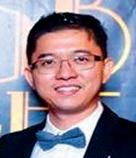
grade A office space underpinned by world-class residential, hospitality, retail, leisure and cultural offerings (Table 1).
With a 10-acre elevated park and open green spaces that cover an area equivalent to 23% of TRX, it will be the next central park and “grand-place” of Kuala Lumpur (Figure 2). TRX was launched in 2012 as a strategic economic enabler for Malaysia. It began operations in 2019, with the opening of Menara Prudential and Exchange 106. In 2022, HSBC Malaysia relocated its HQ to TRX, followed by the Affin Bank Group. Over the next few years, several other developments are expected to be completed, namely CORE Residence, TRX Residences and The Exchange TRX (Figure 3).



While Global Sustainability Goal, namely, United Nations SDGs, started in 2016, the TRX Master Plan Sustainability aspiration had come into play even during the inception stage in 2010. TRX City Sdn. Bhd. (TRXC), the Master Developer of TRX, had prioritised sustainability from the very beginning. The project is one of the early proponents of strong, district-wide sustainability standards.
TRXC has ensured that its partners, including Mulia Group, Lendlease, HSBC, Affin, Veolia and CORE Residence, are committed to the established site-wide sustainability standards for building design, building systems and materials as well as energy and resource usage. In this context, all Plot Developers (current and future) are required to achieve certain leadership in Energy and Environmental Design/ Green Building Index certification ratings (Figure 4).
TRX will then oversee the implementation of sustainability assessments of every plot within the whole district.
The Sustainable Development Goal in the TRX Master Plan in 2010 was designed to achieve the following objectives:
• Reducing carbon emissions into the atmosphere.
• Recycling waste collection from sanitation systems and sewerage network in TRX district.



• Reducing usage of the potable water supplied by service provider by utilising the recycled water supply for non-potable water needs in all TRX buildings, such as for toilet flushing, cooling system etc. These objectives were already in line with the UN SDGs although they were established prior to the UN SDGs which came later in 2015 and implemented in 2016.
Goal: Reducing carbon emissions into the atmosphere (TRX district context): By designing the district with pedestrian-friendly features, it encourages high take-up of public transport and promotes walkability within TRX and neighbouring commercial areas.
The TRX development is built to be climate resilient by integrating design features like awning structures to combat heatwaves and stormwater systems to minimise urban flood risks. In order to reduce urban heat island effect, open-grid pavement systems and high-SRI materials are applied.
Natural cooling methods and softscapes are incorporated into the public realm to create an oasis in the city. Nearly a quarter of the district is allocated for green spaces such as open plazas, pocket parks, streetscapes and the 10-acre elevated park located at the heart of it. The TRX Public Realm will have 150 native species of flora and close to 150,000 plantings.
The Master Plan ensures seamless mobility in and around the district with easy access by rail (via MRT), road and pedestrian traffic. To encourage high public transport usage, the last-mile connectivity is made easy with shaded pedestrian walkways. Sheltered walkways lined with trees and shrubs generate cooler air, hence reducing average temperature and encouraging pedestrians to stroll through the public space. The extensive network of footpaths in TRX will connect the district to neighbouring commercial areas such as the Bukit Bintang shopping belt. It also lowers dependency on private vehicles which will reduce traffic and air pollution.
At the individual plot level, plot owners have also brought in their own sustainable practices, hitting the stipulated sustainability standards by using different measures and technologies that best suit their own buildings and public realm design. For instance, Exchange 106 and Menara Prudential have ameliorated the urban heat island effect with techniques such as open-grid pavement systems and the use of heat-reducing materials on non-roof hardscapes, including paving materials with solar reflection index.

Goal: Reducing carbon emissions into the atmosphere (plot owners’ context): By designing the Building Envelope with less wasteful use of energy in the buildings, thus reducing energy consumption in buildings and simultaneously cutting down carbon emissions to the atmosphere.
Building envelope is the external portion of a building through which thermal energy is transferred and this
thermal transfer is the major factor that affects the interior comfort level and energy usage (MS 1525:2007, Clause 5: Building Envelope).
Fundamentally, the building envelope is designed to block out heat gain into buildings via conduction and radiation. In other words, the building envelope provides resistance to heat gain (MS1525: 2007 Clause 5.1).
In this context, TRX plot owners have made additional efforts to design the building envelope with the features that can reduce the heat transferred into the building and thus reduce the cooling load of the air-conditioning system. The related projects completed in TRX are:
• The Crown of Exchange 106 is double glazed with a vacuum with low U-value in the middle which prevents less heat being transferred into the building.
• The glass façades of Menara Prudential, Menara IQ and Menara Affin Bank buildings have additional UV coatings which reduces heat by 40%.
Goal: Recycling waste collection from sanitation systems and sewerage network: By having a strategic partnership with Veolia Water Technologies (Veolia) to build an On-site Wastewater Treatment and Recycling Plant.
One of TRX’s greatest sustainability milestones is its on-site wastewater treatment and recycling plant which is the first fully integrated commercial water reclaim programme in South-East Asia. Operated by Veolia, the plant can recycle up to 13,300 litres of wastewater daily and targets to recycle at least 80% of used wastewater and to reduce potable water demand by 50%. The plant will be fully operational once the TRX development is completely occupied.








To reach the required targets, Veolia has combined 5 key technologies of advanced water solutions, including Multiflo Settler, AnoxKaldnes Moving Bed Biofilm Reactor (MBBR), Hydrotech Discfilters and Alizair Deodorisation treatment with a reduced chemical consumption and the lowest possible specific energy consumption (kWh/m3 of production) to minimise carbon footprint.
The plant will supply safe, clean and odour-free recycled water for use in cooling, irrigation and toilets. The system also includes an in-house laboratory to allow analysis and to ensure continued compliance with the standard A of Department of Environment (DOE) Malaysia and the recycled water quality.
Goal: Reducing potable water usage supplied by service provider by utilising the recycled water supply for non-potable water needs in all buildings: 1) By developing a recycled water network within TRX to ensure the recycled water is fully used for the needs of non-potable water demand such as for toilet flushing, cooling system, etc. 2) By ensuring all buildings in TRX utilise water-efficient fittings and fixtures to further reduce demand.
With the target to reduce the usage of potable water supplied by service provider, TRXC has invested to develop a recycled water network to supply all the recycled water processed from the wastewater treatment plant.
The treatment plant will operate 24 hours a day, 7 days a week by a team of experienced Veolia employees and will offer huge benefits to the TRX Project in terms of environmental sustainability and water reuse.
The technologies utilised are not limited to the plant area. The treated water will be delivered via a smart water network which can detect and address leakage, targeting more than 98% network efficiency. The Endetec KAPTA installed within the network will also allow real-time monitoring of key parameters in the water distribution system and detect any change in water quality.
In addition, TRX applies a Smart Water feature that not only identifies leakage but also measures and gathers data of water flows from sources to consumption. The system covers monitoring of potable water supplies as well as of treated water and sewage water network which help reach the target reduction for potable water demand by 50%.

TRX is the first in South-East Asia to achieve both the USbased Leadership in Energy & Environmental Design (LEED) Neighbourhood Development at a Gold PreCertified Plan level as well as the Green Building Index (GBI) Township Award at Platinum provisional certification. The holistic district-wide design is complemented by similarly high standards at the individual plot level.
The very first building completed in TRX was Menara Prudential, a Grade A, LEED Gold and MSC-certified commercial building. It was conferred the Gold Winner in the Below 10 Years Non-strata Office category by The Edge Malaysia Best Managed & Sustainable Property Awards 2022.
At the same time, a leading green building nongovernmental organisation, Malaysia Green Building Council (MalaysiaGBC), in conjunction with MalaysiaGBC Leadership in Sustainability Awards Night 2022, conferred the Award of Winner and Honorary Mention to Menara IQ and Menara Affin Bank respectively, in the category of Best New Green & Sustainable Commercial Building.
In addition to achieving sustainable development goals in TRX district, TRXC is also working towards becoming a Smart City by harnessing the latest technology to ensure a secure, safe and efficient district.
In August 2022, TRXC announced the contract award to Willowglen (Malaysia) Sdn. Bhd. to deliver the TRX Integrated Management System (TiMS) which will enable the TRX District Management to have a single overview to manage, operate, control and monitor site-wide common facilities across the site. TiMS combines all equipment and systems in TRX into one platform and brings together traffic, tunnel control, building, public realm and security management as well as integration with facility, asset management and other external third party
The TRX development is a significant project of national importance that responds to modern demands by incorporating sustainable design features centred on ESG (Economic, Social and Governance) principles. It is a futureproof and vibrant district that will improve KL’s liveability, with the target of becoming one of the most sustainable developments globally.
Note:
All content and information in this article have received consent from TRX City Sdn. Bhd. and granted approval to be published in IEM JURUTERA Bulletin.

[1] Master Builder Journal, Vol 1/ 2022#124, Cover Feature on TRX
[2] The Sustainable Backbone of TRX, April 6, 2021, Feature Story on TRX


[3] United Nation Sustainable Development Goals, Goal 6: Ensure access to Water and Sanitation for all (https://www.un.org/ sustainabledevelopment/water-and-sanitation/)
[4] United Nation Sustainable Development Goals, Goal 11: Make Cities Inclusive, Safe, Resilient and Sustainable (https://www.un.org/ sustainabledevelopment/cities/)
[5] Lessons from a decade of emissions gap assessments, published by
The AGENDA for the HYBRID Annual General Meeting is as follows:-

Welcome Address by the President for Session 2022/2023
Confirmation of Minutes of the 63rd Annual General Meeting held on 16 April 2022. Matters Arising.
Annual Report / Financial Statements for Session 2022/2023.
Proposed Amendments to the IEM Constitution.

Discussion on written issues from members of which written notice is submitted to reach IEM Secretariat by 8 April 2023.(Please note that no matters under this item shall be discussed, unless prior written notice is received by 8 April 2023. This is in accordance to the IEM Constitution & Bylaws).
Presentation of Results of Election for Council Session 2023/2024.
Presidential Address 2023/2024.









 Level 19, Tower B, Plaza 33, No. 1, Jalan Kemajuan, Seksyen 13, 42600 Petaling Jaya, Selangor, Malaysia
Level 19, Tower B, Plaza 33, No. 1, Jalan Kemajuan, Seksyen 13, 42600 Petaling Jaya, Selangor, Malaysia

 Written and Prepared by:
Written and Prepared by:
When the Guidelines on Occupational Safety & Health in Construction Industry (Management) or OSHCIM Guideline1 was launched in 2017, the Department of Occupational Safety & Health (DOSH) made clear its main objective in the Message from its Director General: “To trigger improvements in the safety and health performance, the pre-requisite is for every stakeholder in the industry to work together towards a set of common objectives. To realise this, the Guidelines of Occupational Safety & Health in Construction Industry (Management) is developed to recommend the minimum roles of every stakeholder and how they can execute their responsibilities.”
DOSH also made no secret that its primary target was to mandate voluntary recommendations on roles of construction project stakeholders in the guidelines into regulations.
The OSHCIM Guidelines recommends good management practices for the construction project team on how the construction site OSH management can be integrated into the overall process of project management. These practices require the whole construction project team – project owners (clients), designers, contractors and site workers – to work together towards a common end, which is to prevent OSH-related incidents and injuries. These good practices are condensed into the following 5 main elements:
1. Managing the risks by applying the principles of risk management and prevention.
2. Appointing the right people and organisations at the right time.

3. Making sure everyone has the information, instruction, training and supervision they need to carry out their jobs safely.
4. All employers in a project must cooperate and communicate with each other as well as coordinate their work.
5. Consulting workers and engaging with them to promote and develop effective measures to secure health, safety and welfare.
The OSHCIM Guidelines recommends that managing OSH in any construction project should be a shared responsibility among all employers in the supply chain, especially the client, designer and contractor. It is imperative that everyone involved in any construction project should take responsibility for and manage every risk he/she has created in any phase of a project, from conception, design, procurement, construction, start up and future maintenance to the use of the building, including demolition. This is to say OSH should be managed by those who created the risk throughout the whole life-cycle of any building or engineering structure (from cradle to grave).
As many engineers are employed in various capacities in any construction project team, it is essential that they understand the good management practices as recommended by the OSHCIM Guidelines. The proceeding paragraphs briefly explain the 5 main elements.
http://www.dosh.gov.my/index.php/en/legislation/guidelines/building-construction-engineering-work/2498-booklet-guidelines-ofoccupational-safety-and-health-in-construction-industry/file
These set out the principles that all employers should use in their approach to identify the practical measures they should take to control the risks in a particular project. A risk management process is a systematic way to make a workplace as safe as possible and it should also be used as part of the design process. It involves hazard identification, risk evaluation, risk control and a review of control measures. Part of the risk assessment is to determine who will be affected by the work activity. Persons at risk should also include workers who are not directly involved with the work activity but who possibly move around the site. Do take note that OSH risk management should be an active process, rather than be treated as merely superficial and a paper exercise to comply with the law.
The principles of prevention can be summarised as:



• Avoid risks where possible.
• Evaluate those risks that cannot be avoided.

• Put in place proportionate measures that control them at source. The OSHCIM Guidelines recommends that designers and contractors take into account these principles when carrying out their duties. Applying these principles at the planning and design stages will enable the client, designer and contractor to actively manage the risk and integrate control measures in the design process to avoid or, if this is not practicable, minimise risks to safety and health throughout the life of the structure being designed.
Site safety can be affected by design safety. Design safety should be part of a wider set of design objectives, including practicability, aesthetics, cost and functionality. Sometimes, these competing objectives need to be balanced in a manner that does not compromise the safety and health of those who work on or use the product over its life-cycle. For example, closer attention should be given to the design and selection of tools, equipment and materials that, as far as practicable, to avoid or minimise the risks to safety and health.
Appointing the right organisations and individuals to complete a particular project is fundamental to its success, including safety and health performance. In fact, the performance of any construction project is a function of every employer, organisation and individual that make up the construction team. Therefore, it is imperative that any employer who appoints another employer should ensure those appointed are competent and, vice versa, any employee should not accept the appointment unless he is competent. Similarly, any employer should not instruct his workers to carry out or manage, design or work unless they are deemed competent.
Any employer (such as the client) who is responsible for appointing designers or contractors to work on a project, should ensure that those appointed have the skills, knowledge and experience to carry out the work in a way that secures safety and health. If the one appointed is an organisation, it should also have the appropriate organisational capability. Those making the appointments should establish that those they appoint have these qualities before appointing them. Similarly, any designer/contractor seeking appointment as individuals should ensure he/she has the necessary skills, knowledge and experience.
The key person in a construction project should be appointed at the right time. For example, the client should appoint designers and contractors as
soon as practicable and before the start of the construction phase, so that they will have sufficient time to carry out their tasks to plan and manage the pre-construction and construction phases respectively.
Providing supervision, instruction, information and training is required by the OSHA. In general, the employer must decide the level of supervision, instruction, training and supervision by the severity of the hazard, knowledge about controlling the hazard and the cost of controlling the hazard. The employer should also take into consideration the level of skills, knowledge, training and experience of his employees. How many times were worker actions/ capabilities regarded to have contributed to accidents? This indicates inadequate instruction, training and supervision which are, in fact, the statutory duties of the employer.
The employer must provide employees and workers under his control with the information and instructions they need to carry out their work without risk to safety and health. Information can be provided through safe working procedure and method statement, while instructions can be conveyed through toolbox talk, campaign and training. The OSHA also requires designers, such as engineers, who design plants for use at work, such as lifts, escalators, cranes, scaffolds and vehicles, to provide specific information to the manufacturer, user or any other person who use the design.
The construction site is a unique workplace where more than one employer (including the client, designers and contractors) will usually carry out their respective activities in the same place. It is not uncommon that work activities of an employer will affect the safety and health of another employer as every employer is competing to complete their respective tasks. The OSHA requires every employer to ensure that these risks are managed effectively. Therefore, it is essential that all employers working on a site must cooperate with each other, especially in managing risk and coordinating their work to ensure safety and health.
Any employer who has control of the site (usually the main contractor) should ensure that other employers (such as the consultant and contractor appointed by the main contractor) who start work at different stages of the construction phase, cooperate with each other. This includes providing relevant information and instruction for a new contractor to carry out his work safely and communicating
with each other to make sure everyone understands the risks and the measures to control those risks.
For example, regular dialogues or meetings should be conducted between the client, designer and contractor to ensure they have the time and resources to plan, manage, monitor and coordinate the pre-construction and construction phases. Likewise, the main contractor should also conduct progress meetings at suitable intervals to ensure his subcontractors are complying with the established construction phase plan. To facilitate better communication and coordination, it is important that a robust safe system of work is established.
Consulting and engaging with workers on decisions about safety and health measures can create safer and healthier workplaces. The process helps in generating ideas and building ownership and responsibility. Consultation on safety and health is a two-way communication. It involves giving information, instruction and training to the workers, listening to them and taking into account their opinions before the employer makes a decision. For example, there should be a meeting before work starts to discuss the work planned for the day, identify risks and discuss the agreed appropriate control measures. Involving workers help those responsible for safety and health to manage it in a practical way by:
• Helping spot workplace risks and knowing what to do about them.
• Making sure safety and health controls are appropriate.
• Increasing the level of commitment for working in a safe and healthy way.
During the pre-construction stage, those involved in the design stage should communicate with each other about potential risks and work together to find solutions so that a safe workplace can be achieved and sustained. Even in the early stages of a construction project, more informed decisions can be made on how the building or structure can be designed to eliminate or minimise risks by drawing on the knowledge and experiences of other people, including workers.
The OSHCIM Guidelines was developed based on key elements to ensure good OSH management of construction project. Implementing the recommendations of these guidelines will help the industry manage risks at the construction site.



















The increasing of complexity and environmental challenges requires effec�ve solu�ons with the use of geosynthe�cs in the civil engineering world today. Maccaferri


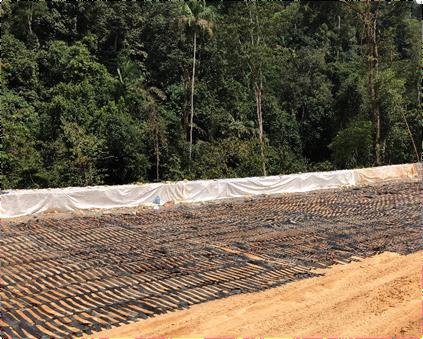
Geosynthetics have been and con�nue to be used in all aspects of the transporta�on industry including, roadways, railroads, retaining walls, slopes and waterways. we offer specific product development and solu�ons to cater sophis�cated challenges op�mising value and simplifying your project.
In conjunction with the 63rd IEM Annual Dinner & Awards Night 2022, the Urban Engineering Development Special Interest Group (UEDSIG) conducted a technical site visit to the Veolia Wastewater Treatment Plant in Tun Razak Exchange, Kuala Lumpur, on 23 July 2022. This is the first water treatment plant of its kind in the region and is the recipient of the IEM Outstanding Engineering Achievement Award 2021.
Twenty IEM members from UEDSIG, IEM Miri, Penang, Perak, Southern and Southern Young Engineers Section (YES) branches, took part in the visit led by Ir. Yau Chau Fong, Vice President of IEM and Chairman of Standing Committees (2022/2023).



The visit started with a tour of the international financial district, including Exchange 106, one of Asia’s tallest towers, the central business district area and TRX’s world-class public realm, after which the group attended a briefing on the overview of the 70-acre project and its master plan by TRX representatives Ar. Ahmad Ridzuan and Ir. Chua Long Siew.
Veolia Water Technologies (VWT) Plant Manager, Muhammad Farid bin Mazlan, assisted by VWT Performance and Sustainability Manager Mohammad Aizuddin bin Mohammad Ismail, gave a short briefing on the country’s first private Wastewater & Recycling Plant.
The group was then taken on a technical visit of the facilities. The enclosed plant is required to be built as part of the commercial structure within the limited space of the busy commercial hub. The first fully Integrated Wastewater Treatment Plant in South-East Asia is a key component of TRX’s sustainability framework and aims to be a global reference for sustainable development.
The plant, which can treat up to 13,300 litres of wastewater daily, will help cut half of TRX’s potable water demand.
a. Primary Settler: Multiflo Settler.
b. Biological Treatment: AnoxKaldnesTM Moving Bed Biofilm Reactor (MBBR) to remove BOD/ COD and nitrogen.
c. Secondary Settler: Hydrotech Discfilters to separate liquids and solids.
d. Tertiary Treatment: Dual Media Filter (DMF), UV Disinfection system and Chlorination for fine polishing of treated effluent, bacteria reduction and disinfection.
e. Deodorisation Treatment: AlizairTM (Biological Odour Treatment) and Granular Activated Carbon (GAC) to reduce foul smell, pollutants and impurities. These technologies allow reduced chemical consumption and the lowest specific energy consumption (kWh/m3 of production) to minimise carbon footprint.
The technologies utilised are not limited to within the plant area. The treated water is also delivered in a smart water network that can detect and address leakage, targeting more than 98% network
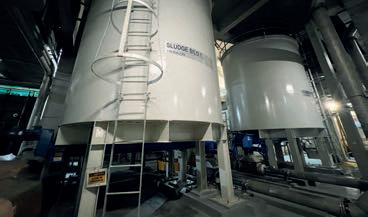
efficiency. The Endetec KAPTA installed within the network will also allow real-time monitoring of key parameters in the water distribution system and detect any changes in water quality.
The treatment plant will operate 24/7, manned by a team of experienced employees and will offer numerous benefits to the TRX Project in terms of environmental sustainability and water reuse.

TRX City Sdn. Bhd., the master developer of TRX, is 100% owned by Minister of Finance Incorporated and its role transcends beyond that of ordinary property development. With an estimated GDV of more than RM40 billion, it will encompass investment grade A office space underpinned by world-class residential, hospitality, retail, leisure and cultural offerings.
As a world leader in water reuse, Veolia aims to recover at least 80% of sewage or wastewater generated annually from the whole TRX development area. Providing safe, clean and odour-free recycled water for use in district cooling, irrigation and in toilets, the plant is also equipped with an in-house laboratory to allow for internal analysis to be conducted and ensure continuous compliance towards the legal and client requirements.


As a district with the best connectivity in KL, TRX features an integrated MRT interchange station for the Kajang and Putrajaya lines. This is further supported by direct links to major thoroughfares such as Jalan Tun Razak, the MEX highway, SMART Tunnel and upcoming DUKE 3 (Setiawangsa-Pantai Expressway).
To date, TRX has signed on global property and infrastructure group Lendlease to jointly develop the Exchange TRX, Indonesia’s leading property developer, Mulia International, to develop The Exchange 106, HSBC Malaysia and Affin Bank Berhad for their new HQs, IJM Bhd. to build and to lease Prudential Malaysia’s new HQ and CORE Precious Development Sdn. Bhd. for residential plot.
Webinar Talk Topic: Additive Manufacturing: Advancing The Future of Manufacturing
Date : 5 April 2023 (Wednesday)
Time : 2.00 p.m. - 4.00 p.m.
Venue : Digital Platform
Approved CPD : 2
Speaker : Mr. Lim Mun Chun
2 Days Professional Development Workshop
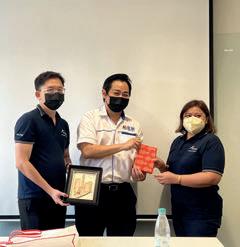
Date : 10 - 11 April 2023 (Monday - Tuesday)
Time : 9.00 a.m. - 5.00 p.m.
Venue : IEM Penang Branch, Gelugor, Pulau Pinang

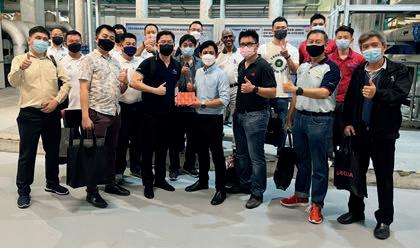
Approved CPD : 15
Speakers : Ir. Looi Hip Peu : Ir. Yau Chau Fong : Ir. Lee Cheng Pay
Technical Talk on Bursa Carbon Exchange: Accelerating a Net Zero Future
Date : 8 April 2023 (Saturday)
Time : 9.00 a.m. - 11.00 a.m.
Venue : Wisma IEM
Approved CPD : 2
Speaker : Dr Wei-nee Chen
64th Annual General Meeting of The Institution of Engineers, Malaysia (PHYSICAL)
Date : 15 April 2023 (Saturday)
Time : 9.00 a.m. - 11.00 a.m.
Venue : Wisma IEM
Approved CPD : 4
Name: _________________________________________________________________________________________________________
Mailing Address: _________________________________________________________________________________________________
Company/Institution:
No:
Please commence my subscription from: _________________________(month/year) Signature: _______________________________
To start your subscription of IEM’s publications, complete this form and mail it back to the address below. For faster processing, fax it to: +603 7493 1047. Thank you.
What is your primary job title?
Corporate Management (including chairman, president, proprietor, partner, director, vice president, general manager, division manager, import/export manager, other corporate title)
Management (including project/contract/equipment/service/transport district manager, clerk of works, other technical or operating manager)
Engineering/Design (including chief engineer, chief designer, civil/ highway/mechanical/planning engineer, other engineering/design title)
Buying/Purchasing (including chief buyer, buyer, purchasing officer, other buying/purchasing title)
Titles allied to the field (architect, consultant, surveyor, research and development professor, lecturer, supervisor, superintendent, inspector or other allied title)
Others (please specify) ____________________________
What type of organisation do you work in? (Tick one box only)
Contractor
Sub-contractor specialist
Design and build contractor
Consulting engineering/architectural/quantity surveying practice
Mining/quarrying/aggregate production company
Petroleum producer
International/national authorities
National/regional/local government
Public utilities (electricity, gas, water, deck and harbour, other)
Manufacturer
Distributor/importer/agent
Construction department of large industrial/Commercial concern
Association/education establishment/research
Construction equipment hire/rental company
Project/construction management consultancy
Others (please specify) _______________________________
What are the main activities of your organisation? (Tick all that apply)
Constructions of:
Roads/bridges
Dams/reservoirs/irrigation
Manufacturer of:
Construction equipment
Cement
Harbours/offshore structures Other construction materials
Foundations/tunnels
Distribution
Pipelines/refineries Construction equipment
Structures/steel work
Building (commercial, industrial)
Construction materials
Hire/rental of construction equipment
Housing Design
Construction management
Deep mining
Earth-moving/open cast mining
Aggregate production
Others (Please specify) _________________________________________
Rate (Please tick)

RM360.00 - 12 issues of JURUTERA
RM84.00 - 2 issues IEM Journal (Half-yearly)
Terms and Conditions:
1) The subscription is to be prepaid.
2) Please make cheque payable to Dimension Publishing Sdn. Bhd.
3) Subscriptions are not refundable.
4) Magazine/s will be sent to the mailing address given.
5) Students are entitled for a 20% discount from the above subscription rate.
6) Students must submit a photocopy of the student identification card together with the payment.
7) The above rate is inclusive of delivery charges and applicable in Malaysia only.
8) Additional delivery charges will apply to overseas subscribers.
For subscription enquiries, please contact +603-7493 1049 or email to info@dimensionpublishing.com

 Written and Prepared by:
Written and Prepared by:
Urban flash flood is a growing concern in cities around the world. It occurs when heavy rainfall overwhelms the capacity of a city’s stormwater management systems, leading to the accumulation of water on streets and low-rise areas. This can cause significant damage to buildings and infrastructure as well as pose serious risks to public health and safety. There are several ways that cities can address the problem of urban flooding.
One approach is to improve the capacity of stormwater management systems by constructing new detention basins or increasing the size of existing ones. Another is to use “green infrastructure” such as green roofs, permeable pavements and rain gardens to absorb and filter water while reducing the amount of runoff entering stormwater systems.
Climate change is having a significant impact on flood modelling and the prediction of flood risks. As the climate changes, the pattern and intensity of precipitation are likely to change, which can affect the likelihood and severity of flooding. For example, some areas may experience more frequent heavy rain events, while others may experience longer dry periods followed by intense rainfall. These changes can make it more difficult to accurately predict flood risks using traditional flood models. In addition, climate change is likely to affect the physical characteristics of the landscape, such as soil conditions and vegetation, which can also impact flood risk. For example, rising temperatures and changes in precipitation patterns may lead to the loss of vegetation cover, which can increase the amount of runoff and the risk of flooding.
Overall, urban flooding is a complex problem that requires a multi-faceted approach to address. By using a combination of technical solutions and individual action, cities can work to reduce the risk of flooding and protect residents and infrastructure from the damaging effects of heavy rainfall.
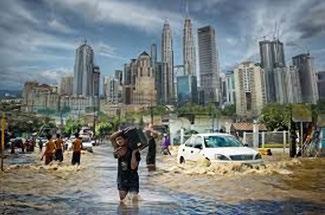
Source: Google Image
To address the challenges posed by climate change, flood models may need to be modified or updated to incorporate the latest data on changing climate conditions and the potential impacts on flood risk. This may require the use of more complex models that can better capture the dynamic and uncertain nature of the system being modelled1,2
The Soil Conservation Service (SCS) Curve Number (CN) method is a widely used technique for estimating runoff from precipitation in a drainage area. It is used to predict the amount of runoff that will occur from a specific area after a rainfall event, which can be helpful in predicting flood potential in urban areas. The SCS CN runoff predictive methodology uses a simple formula to estimate runoff based on the type of land cover, the amount of precipitation and the initial abstraction (the amount of precipitation that is lost to infiltration and evaporation before it becomes runoff). The SCS CN method has been widely used for decades but it has some limitations, particularly in urban areas where the land cover is complex with mixed development and there are many impervious areas1-4.

provide a more reliable estimate of flood risk. In addition to these benefits, the return period free CN method also has the advantage of not relying on long historical rainfallrunoff data, which can be difficult to obtain in some cases. This makes it a useful tool for predicting runoff and flood risk in areas where such data is not available or is limited. This methodology has also been tested and implemented at several locations in Malaysia1, 2, 4 .
Funding:
The research was supported by the Ministry of Higher Education (MoHE) through the Fundamental Research Grant Scheme (FRGS/1/2021/WAB07/UTAR/02/1).
[1] Ling, L.; Yusop, Z.; Ling, J.L. Statistical and Type II Error Assessment of a Runoff Predictive Model in Peninsula Malaysia. Mathematics 2021, 9, 812. https://doi.org/10.3390/math9080812
[2] Ling, L.; Lai, S.H.; Yusop, Z.; Chin, R.J.; Ling, J.L. Formulation of Parsimonious Urban Flash Flood Predictive Model with Inferential Statistics. Mathematics 2022, 10, 175. https://doi.org/10.3390/ math10020175
[3] Ling, L.; Yusop, Z.; Yap, W.-S.; Tan, W.L.; Chow, M.F.; Ling, J.L. A Calibrated, Watershed-Specific SCS-CN Method: Application to Wangjiaqiao Watershed in the Three Gorges Area, China. Water 2020, 12, 60. https://doi.org/10.3390/w12010060
[4] Ling, L.; Yusop, Z.; Chow, M.F. Urban flood depth estimate with a new calibrated curve number runoff prediction model. IEEE Access 2020, 8, 10915–10923. https://ieeexplore.ieee.org/document/8952667
https://doi.org/10.3390/ books978-3-0365-0821-4
Source: MDPI
The newly developed return period free CN runoff predictive methodology does not rely on long historical rainfall-runoff data, but rather uses the most recent rainfallrunoff dataset at the watershed of interest to model the latest runoff characteristics of the watershed and estimate the runoff amount. It is also capable of estimating the runoff amount according to the ground saturation conditions of the watershed. This new runoff predictive methodology is also able to derive statistically significant curve numbers for a watershed of interest2-4
Using the most recent rainfall-runoff data for the watershed of interest can be beneficial in providing a more accurate estimate of runoff, as the hydrological conditions of a watershed can change over time due to factors such as land use changes, urbanisation and climate change. By using the most up-to-date data, the return period free CN method can provide a more accurate prediction of runoff and flood risk. The ability to derive a statistically significant CN value with confidence interval range for a specific watershed is also a useful feature, as it allows the return period free CN method to be tailored to the specific hydrological characteristics of the watershed. This can help to improve the accuracy of the runoff prediction and
Technical Talk on Design of Caverns In Rock
Date : 17 April 2023 (Monday)
Time : 4.30 p.m. - 6.30 p.m.
Venue : Wisma IEM
Approved CPD : 2
Speakers : Mr. Jason Chin : Mr. Jack Muir
Physical Talk Evolution of Commercial Aircraft Technology and Aircraft Maintenance Engineers’ Training
Date : 29 April 2023 (Wednesday)
Time : 9.00 a.m. - 11.00 a.m.
Venue : Wisma IEM
Approved CPD : 2
Speaker : Ir. Ricky Liew Chee Leong
As I get to travel to different project sites and conferences all over the country in the course of my job, I try to fully utilise any opportunity to Cuti-Cuti Malaysia. Trained as a mechanical engineer, my passion for trains has driven me to embark on a journey to experience the different railway lines. In fact, the goal to travel on every single railway line in Malaysia is on my bucket list!
Train tourism, or fondly known as cuti kereta api, is something that brings me on scenic routes without the stress of driving and provides a break from the hectic life of an engineer while wondering how our engineering forefathers have helped shaped this efficient mode of mass transportation.
From the railways in the peninsula (serviced by Keretapi Tanah Melayu Berhad or KTMB) to the Sabah State Railway which links Tanjung Aru in Kota Kinabalu to Tenom, each track offers different sceneries and has different rolling stocks that services them.

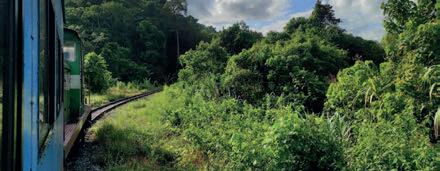

One may experience a sleeper train, also known as overnight service train, or intercity trains that traverse the iconic East Coast line. Fancy Shinkansen style travel without leaving Malaysia? Take a ride on the Electric Train Service (ETS) of the West Coast line!
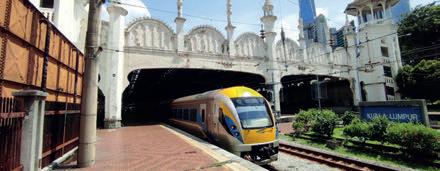
If you want that nostalgic experience of yesteryear in Sabah, you’d enjoy the Sabah State Railway’s Sunday service from Beaufort to Halogilat just for the view and the opportunity to mingle with the locals!

So go hop on a train to relive those memories of train travel. It’s very affordable and you get to explore the beauty of Malaysia and the fascinating engineering behind those tracks!
Written and Prepared by:Tarikh: 8 Mac 2023
111853 SHATISWARREN A/L PACHIAPPAN BE HONS (UNITEN) (MECHANICAL, 2019)
Kepada Semua Ahli,
TEMUDUGA PROFESIONAL TAHUN 2023
Berikut adalah senarai calon yang layak untuk menduduki Temuduga Profesional bagi tahun 2023.
Mengikut Undang-Undang Kecil IEM, Seksyen 3.8, nama-nama seperti tersenarai berikut diterbitkan sebagai calon-calon yang layak untuk menjadi Ahli Institusi, dengan syarat bahawa mereka lulus Temuduga Profesional tahun 2023.
Sekiranya terdapat Ahli Korporat yang mempunyai bantahan terhadap mana-mana calon yang didapati tidak sesuai untuk menduduki Temuduga Profesional, surat bantahan boleh dikemukakan kepada Setiausaha Kehormat, IEM. Surat bantahan hendaklah dikemukakan sebulan dari tarikh penerbitan dikeluarkan.
Ir. Prof. Dr Zuhaina binti Zakaria
Setiausaha Kehormat, IEM
PERMOHONAN BARU
Nama Kelayakan
KEJURUTERAAN AWAM
MOHD RIDZUAN BIN SALIMAN BE HONS (UTM) (CIVIL, 2008)
NORSYAMZARINA SAMSUDEN BE HONS (UKM) (CIVIL & ENVIRONMENTAL, 2000)
KEJURUTERAAN ELEKTRIKAL
ABDUL MARMADRULNISHAM BIN
OMAR BE HONS (UiTM) (ELECTRICAL, 2017)
FOON CHUN YIN BE HONS (UNITEN) (ELECTRICAL POWER, 2019)
MOHD SAFIUDDIN BIN MANSOR BE HONS (UiTM) (ELECTRICAL, 2007)
MUHAMMAD FIRDAUS BIN ROSLI BE HONS (UNITEN) (ELECTRICAL POWER, 2013)
MUHAMMAD HILMI BIN ZAINUDDIN BE HONS (UTM) (ELECTRICAL, 2015)
NORFADHILAH BINTI TUKICHAN BE HONS (UTM) (ELECTRICAL, 2014)
KEJURUTERAAN MEKANIKAL
HAFIZA NUR BINTI MARUNI BE HONS (UTeM) (MECHANICAL (STRUCTURE & MATERIAL), 2011)
HASZNIL AFIS BIN ALIAS BE HONS (UKM) (MECHANICAL, 2007)
MARINI BINTI SAWAWI BE HONS (UNIMAS) (MECHANICAL & MANUFACTUIRING SYSTEMS, 1999) ME (UTM) (MECHANICAL, 2005) PhD (MONASH) (2016)
MUHAMAD ROSLAN BIN DARUL AMAN BE HONS (UTeM) (MECHANICAL (STRUCTURE & MATERIAL), 2011)
PERMOHONAN MENJADI AHLI KORPORAT Nama Kelayakan
KEJURUTERAAN AWAM
LIM ZHE XIAN BE HONS (RMIT) (ELECTRICAL & ELECTRONIC, 2017)
No.
PERPINDAHAN AHLI
Ahli Nama Kelayakan
KEJURUTERAAN AWAM
119806 ANTON IWAN DANDOT BE HONS (RMIT) (CIVIL & INFRASTRUCTURE, 2014) ME (RMIT) (STRUCTURES & FORENSICS, 2014)
97346 KHOO YIT SHEUN ME HONS (NOTTINGHAM) (CIVIL, 2017)
90740 KUEK CHAI JIAN BE HONS (CIVIL & STRUCTURAL, 2018)
65776 MOHAMMAD RIDHWAN BIN ZULKAFLI BE HONS (UiTM) (CIVIL, 2014)
27392 NOOR SHEENA HERAYANI BINTI HARITH BE HONS (USM) (CIVIL, 2008) MSc (USM) (CIVIL, 2011) PhD (UTM) (CIVIL, 2016)
38791 SHAHRIZAL BIN SAMAT BE HONS (UKM) (CIVIL & STRUCTURAL, 1999)
81300 WAN CHEE WAI BE HONS (UKM) (CIVIL & STRUCTURAL, 2008)
102388 WONG PIK YEN BE HONS (UTHM) (CIVIL, 2010)
72630 WOON WAI JACK BE HONS (UTM) (CIVIL, 2013)
KEJURUTERAAN GEOTEKNIKAL
81308 THONG CHIA CHIA BE HONS (UNIMAS) (CIVIL, 2012) ME (UNIMAS) (2016)
KEJURUTERAAN MEKANIKAL
121059 CHIN BEI YI BE HONS (CURTIN) (MECHANICAL, 2019)
105537 RAMKEE A/L MARAN BE HONS (UNITEN) (MECHANICAL, 2015)
51897 ROLF WILLA ANAK PATRICK SANDIN BE HONS (UNIMAS) (MECHANICAL & MANUFACTURING, 2015)
PERPINDAHAN MENJADI AHLI KORPORAT No. Ahli Nama Kelayakan
KEJURUTERAAN AWAM
71693 CHOO CHUNG SIUNG BE HONS (SWINBURNE) (CIVIL, 2010) PhD (SWINBURNE) (2015)
29214 SITI SALWA BINTI OTHMAN BE HONS (UKM) (CIVIL & ENVIRONMENTAL, 2005) ME (UTM) (STRUCTURE, 2018)
KEJURUTERAAN KIMIA
44579 HII CHING LIK BE HONS (UMIST) (CHEMICAL, 1996) MSc (UPM) (FOOD PROCESSING AND ENGINEERING, 2004) PhD (NOTTINGHAM) (2010)
KEJURUTERAAN MEKANIKAL
28855 UCOK RAHENRA BIN HASMAR BE HONS (MALAYA) (MECHANICAL, 2006)
KEJURUTERAAN SUMBER MINERAL
18300 SYED FUAD BIN SAIYID HASHIM BE HONS (USM) (MINERAL RESOURCES, 1996) MSc (USM) (MINERAL RESOURCES, 1999) PhD (QUEENSLAND) (MINING, MINERALS & MATERIALS, 2004)
PERPINDAHAN MENJADI AHLI TEKNOLOGIS KEJURUTERAAN No. Ahli Nama Kelayakan
KEJURUTERAAN AWAM
28090 LEONG WEI BOON BE HONS (USM) (CIVIL, 2007)
KEJURUTERAAN ELEKTRONIK
49632 RAJESHPARAN A/L RANGARAJ B.TECH (HONS) (USM) (QUALITY CONTROL AND INSTRUMNETATION, 2001) MSC (UKM) (INDUSTRIAL AND TECHNOLOGY MANAGEMENT, 2011)
PERPINDAHAN MENJADI AHLI JURUTEKNIK KEJURUTERAAN No. Ahli Nama Kelayakan
KEJURUTERAAN ELEKTRONIK
117153 ABDUL MALEK BIN MOHD SALLEH DIPL. (POLITEKNIK SULTAN SALAHUDDIN ABDUL AZIZ SHAH) (ELECTRONIC - MEDICAL, 2010)
KEJURUTERAAN MEKANIKAL
116677 MOHD HAZLAMI BIN ABD AZIZ DIPL. (POLITEKNIK SULTAN SALAHUDDIN ABDUL AZIZ SHAH) (MECHANICAL - PACKAGING, 2008)
SENARAI PENDERMA KEPADA
WISMA DANA BANGUNAN IEM
Institusi mengucapkan terima kasih kepada semua yang telah memberikan sumbangan kepada tabung Bangunan Wisma IEM. Ahli-ahli IEM dan pembaca yang ingin memberikan sumbangan boleh berbuat demikian dengan memuat turun borang di laman web IEM http://www.iem.org.my atau menghubungi secretariat di +603-7968 4001 / 5518 untuk maklumat lanjut. Senarai penyumbang untuk bulan Februari 2023 adalah seperti jadual di bawah:
PERMOHONAN BARU / PEMINDAHAN AHLI
Persidangan Majlis IEM yang ke-429 pada 17 Januari 2022 telah meluluskan sebanyak 682 ahli untuk permohonan baru dan permindahan ahli. Berikut adalah senarai ahli mengikut disiplin kejuruteraan:
nama ahli dan kelayakan adalah seperti di bawah. Institusi mengucapkan tahniah kepada ahli yang telah berjaya.
Ir. Assoc. Prof. Dr David Chuah Joon Huang
Setiausaha Kehormat, Institusi Jurutera Malaysia, Sesi 2021/2022
PERMINDAHAN AHLI KEPADA AHLI FELLOW
No. Ahli Nama Kelayakan
KEJURUTERAAN AWAM
56803 MOHD AZMI BIN ISMAIL BE HONS (MIDDLESEX) (CIVIL, 1986) MSc (UiTM) (INTEGRATED CONSTRUCTION AND PROJECT MANAGEMENT,2000)
KEJURUTERAAN MEKANIKAL
17629 AZIZUL AZUAN BIN SAHRUM @ MD. DAUD BSc HONS (WESTERN MICHIGAN) (MECHANICAL, 1992)
PEMINDAHAN KEPADA AHLI 'SENIOR'
No. Ahli Nama Kelayakan
KEJURUTERAAN ELEKTRIKAL
87517 AHMAD FAUZI BIN OTHMAN BE HONS (UTM) (ELECTRICAL, 2005)
24165 CHIN SUN SEK BE HONS (UTM) (ELECTRICAL, 2002)
62021 MICHELLE LU BE HONS (CURTIN) (ELECTRICAL, 2006) ME (UNIMAS) (2013) PhD (UNIMAS) (2017)
24146 MOHAMAD IKHRANIZAM BIN MOHAMAD ROS BE HONS (UNITEN) (ELECTRICAL, 2000)
58057 WAN YUSRIZAL BIN WAN YUSOFF BE HONS (UTM) (ELECTRICAL, 2006)
PEMINDAHAN AHLI KEPADA AHLI KORPORAT No. Ahli Nama Kelayakan
KEJURUTERAAN AWAM
36989 AWANG ZAIDELADHA BIN AWANG REDZUAN BE HONS (USM) (CIVIL, 2005)
93543 LIEW KHANG YUEH BE HONS (UTAR) (CIVIL, 2016)
59133 MUHAMMAD HAZRIN BIN YACOB BE HONS (UiTM) (CIVIL, 2009) MSc (UiTM) (CIVILENVIRONMENTAL, 2013)
102383 MUHD AL HAFIZ BIN MUHAMMAD YUSOFF BE HONS (UNIMAP) (BUILDING, 2013)
54243 RAZWAN BIN ABDUL RASHID AHMAD BE HONS (UTP) (CIVIL, 2011) MSc (UTM) (PETROLEUM, 2014)
KEJURUTERAAN ELEKTRIKAL
114796 ABU HASSAN BIN MOHAMMED NAZARI BE HONS (QUEENSLAND) (ELECTRICAL, 2016)
72725 CHUA HOCK GUAN BE HONS (UTHM) (ELECTRICAL, 2010) ME (UTHM) (ELECTRICAL, 2013)
66360 CHUA KEIN HUAT BE HONS (UKM) (ELECTRICAL, ELECTRONIC AND SYSTEMS, 2004) ME (MALAYA) (2009) PhD (UTAR) (2017)
54006 HAU MIN TZE BE HONS (MMU) (ELECTRICAL, 2010)
112711 LEE YAN KANG BE (CARLETON) (ELECTRICAL, 2015)
29817 LING HENG YEW, TONNY BE HONS (LIVERPOOL) (ELECTRICAL & ELECTRONICS, 1999)
97487 MUHAMAD AFIQRI BIN IBRAHIM BE HONS (UNITEN ) (ELECTRICAL POWER, 2013)
36871 MUHAMMAD MUZAWAHIR BIN LIJONG BE HONS (UiTM) (ELECTRICAL, 2004)
21203 MUZAMIR BIN ISA BE HONS (UTM) (ELECTRICAL, 2001) ME (UTHM) (ELECTRICAL, 2004) PhD (AALTO UNIVERSITY) (2013)
73286 NG TZE HERNG BE HONS (RMIT) (ELECTRICAL, 2013)
59906 SYAHRUL NIZAM BIN MD SAAD BE HONS (UNITEN) (ELECTRICAL & ELECTRONICS, 2005) ME (UNITEN) (ELECTRICAL, 2012) PhD (EDINBURGH) (2020)
KEJURUTERAAN LEBUHRAYA
43536 ABDUL JAMEEL BIN A. ABDUL GAFOOR BE HONS (UNISEL) (CIVIL, 2009) MBA (EAST LONDON) (INTERNATIONAL BUSINESS, 2014)
KEJURUTERAAN MEKANIKAL
62059 CHAIN MENG YEE BE HONS (MONASH) (MECHANICAL, 2012)
74201 KOH WEI HAO ME HONS (BATH) (MECHANICAL, 2014)
27492 LIOW SOON SHAK BE HONS (UNIMAS) (MECHANICAL & MANUFACTURING SYSTEMS, 2006)
80742 LOH KWAN JOU BE HONS (UTAR) (MECHANICAL, 2012)
87110 MUHAMMAD AIZUDDIN BIN MUFID BE HONS (UPNM) (MECHANICAL, 2015)
49610 TEO EU JIN BE HONS (USM) (MECHANICAL, 2010)
KEJURUTERAAN PEMBUATAN
66719 JOSHUA A/L JAYA PRAKASH BE HONS (USM) (MANUFACTURING ENGINEERING WITH MANAGEMENT, 2010)
PEMINDAHAN KEPADA AHLI (MELALUI PEPERIKSAAN PENILAIAN PROFESIONAL)
No. Ahli Nama Kelayakan
KEJURUTERAAN AEROANGKASA
24204 CHUA YAW LONG BE HONS (UPM) (AEROSPACE, 2000) MSc (SHEFFIELD) (CONTROL SYSTEMS, 2004)
80786 TANG KOK CHEONG BE HONS (SALFORD) (AERONAUTICAL, 1994) PhD (SALFORD) (1998)
KEJURUTERAAN AWAM
08123 MANSOR BIN IBRAHIM ADV.DIP (UiTM) (CIVIL, 1984)
KEJURUTERAAN MEKANIKAL
71184 CHONG KOK HING BE HONS (UNIMAS) (MECHANICAL & MANUFACTURING, 2006)
ME (UNIMAS) (MECHANICAL, 2009) PhD (UNIMAS) (2015)
16652 MOHAMMAD ANUAR BIN YUSOF BE HONS (LEEDS) (MECHANICAL, 1995)
21798 SHAMSUL AMRI BIN SULAIMAN BSc (VIRGINIA STATE UNI) (MECHANICAL, 1998)
94120 TOO HENG YUEN, JEFFREY BE HONS (NOTTINGHAM TRENT UNI) (MECHANICAL, 2002)
MSc (UTM) (MECHANICAL, 2016)
PERMOHONAN MENJADI AHLI KORPORAT No. Ahli Nama Kelayakan
KEJURUTERAAN KIMIA
116661 SITI WAHIDAH BINTI PUASA BE HONS (USM) (CHEMICAL, 2004)
MSc (USM) (CHEMICAL, 2006) PhD (UiTM) (CHEMICAL, 2016)
KEJURUTERAAN AWAM
116668 MOHD KHAIRUL BIN KAMARUDIN BE HONS (UTM) (CIVIL, 2005) MSc (SURREY) (BRIDGE, 2007) PhD (SURREY) (2015)
116667 NIK KUN BIN NIK MAN BE HONS (UTM) (CIVIL, 1992)
KEJURUTERAAN ELEKTRIKAL
116662 MOHD NOOR AZIMMI BIN REDZUAN BE HONS (USM) (ELECTRICAL, 2010)
116660 MUHAMAD HELMI BIN ABDUL MAJID BE HONS (UiTM) (ELECTRICAL, 2008)
PERMOHONAN MENJADI AHLI (MELALUI PEPERIKSAAN PENILAIAN PROFESIONAL)
No. Ahli Nama Kelayakan
KEJURUTERAAN AWAM
116665 MAZLAN BIN HARUN BE HONS (UTM) (CIVIL, 2001) ME (UTM) (GEOTECHNICS, 2019)
KEJURUTERAAN ELEKTRIKAL
116664 MOHD JAILAINI BIN HARUN BE HONS (UiTM) (ELECTRICAL, 1998)
116663 MUHAMAD AZINUDDIN BIN DAHALAN BE HONS (UNITEN) (ELECTRICAL POWER, 2003)
KEJURUTERAAN MEKANIKAL
116666 MOHD FAZRIL IRFAN BIN AHMAD FUAD BE HONS (UTP) (MECHANICAL, 2009) MSc (SALFORD) (PETROLEUM AND GAS, 2014)
PERMOHONAN KEPADA AHLI 'SENIOR GRADUATE'
No. Ahli Nama Kelayakan
KEJURUTERAAN AWAM
116347 ALBART KURAU ANAK JAWI BE HONS (UiTM) (CIVIL, 2002)
116189 ANDERS DAMIT SINGKOD BE HONS (UMS) (CIVIL, 2013)
116346 ANG LYE BOON BE HONS (CURTIN) (CIVIL & CONSTRUCTION, 2013)
42664 CHIANG CHUNG PING BE HONS (UTHM) (CIVIL, 2011)
116193 DHIYA RUZANNA BINTI AB WAHID BE HONS (UTM) (CIVIL, 2008) ME (UTM) (GEOTECHNICS, 2017)
116350 ELINAWATI BINTI MAT JUSOH BE HONS (UTM) (CIVIL - CONSTRUCTION MANAGEMENT, 2004)
116463 ISHAK BIN JOHARI BE HONS (UTHM) (CIVIL, 2002) MTech VOCATIONAL EDUCATION (UTHM) (2003) PhD (UPSI) (TECHNICAL EDUCATION AND VOCATIONAL, 2019)
116477 MOHD FAIZA BIN IBRAHIM BE HONS (USM) (CIVIL, 2005)
116467 MOHD SHAHRIZAL BIN MOHD NOR BE HONS (UTM (CIVIL, 2003)
116345 RIZZA BIN ANUAR BE HONS (UNIMAS) (CIVIL, 2010)
49475 RYLE RAYONG ANAK TANDANG BE HONS (UiTM) (CIVIL (INFRASTRUCTURE), 2013)
KEJURUTERAAN ELEKTRIKAL
116349 AMIR FIRDAUS BIN JAMALUDIN BE HONS (UiTM) (ELECTRICAL, 2012)
116465 AZANI BIN CHA'ARI BE HONS (UTM) (ELECTRICAL, 2011)
116464 NASIRUDDIN BIN NASIR BE HONS (UNITEN) (ELECTRICAL POWER, 2009)
116478 NORA AFZAM ABD WAHAB BE HONS (UTP) (ELECTRICAL & ELECTRONIC, 2007)
116468 ONG REE SHENG BE HONS (MMU) (ELECTRICAL, 2008)
116471 TAN MING HUI BE HONS (UTM) (CIVIL, 2012) ME (UTeM) (MANUFACTURING (MANUFACTURING SYSTEM), 2015)
PhD (UTeM) (2021)
KEJURUTERAAN ELEKTRONIK
116192 ERMAN FARIZAL BIN DAUD BE (UMP) (ELECTRICAL (ELECTRONICS), 2009)
116190 FAZARUDIN BIN PAIDIN BE HONS (UNITEN) (ELECTRICAL AND ELECTRONICS, 2010)
116469 GOH LIND SAY BE (ADELAIDE) (ELECTRICAL AND ELECTORNIC, 2007)
116473 HUSHAIRI BIN ZEN BE HONS (UNIMAS) (ELECTRONIC AND TELECOMMUNICATIONS, 1999) ME (UNIMAS) (ELECTRONICS AND TELECOMMUNICATION, 2002)
PhD (EDITH COWAN) (2009)
116466 LIM SHEUE HUI BE HONS (NOTTINGHAM) (ELECTRICAL AND ELECTRONIC, 2006)
MSc (USM) (ELECTRONIC SYSTEM DESIGN, 2009)
116462 WIDAD BINTI ISMAIL BE HONS (HUDDERSFIELD) (ELECTRONIC AND COMMUNICATION, 1999)
PhD (BIRMINGHAM) (ELECTRONIC AND ELECTRICAL, 2004)
KEJURUTERAAN KIMIA
116682 SHAIFULAZRI BIN ZAINULABIDIN BE HONS (UiTM) (CHEMICAL, 2007)
KEJURUTERAAN MEKANIKAL
116348 MOHD KHAIRUL HILMI BIN MOHD NOOR BE (UNI. OF APPLIED SCIENCE AALEN) (MECHANICAL, 2010)
MSc (UTM) (MECHANICAL, 2018)
116470 MOHD TARMIDZIY BIN ISHAIK BE HONS (UTM (MECHANICAL, 2002)
116475 MUHAMMAD ZULHILMY BIN YAMAN BE HONS (UTHM) (MECHANICAL, 2011)
116472 NG TYAN YONG BE HONS (UTM) (MACHINERY, 1993)
116191 NIK NURUL FATIMA AZZAHRA BINTI MOHD ROSLI BE HONS (UNITEN) (MECHANICAL, 2011)
ME (MALAYA) (MECHANICAL, 2019)
116195 PHUA CHYE CHUN HENRY BSc (WESTERN MICHIGAN) (MECHANICAL, 2002)
116476 SHASINDRAN SHANMUGAM BE HONS (UTP) (MECHANICAL, 2011)
116194 TAN CHEE LEONG BE HONS (UTM) (MECHANICAL, 2000)
KEJURUTERAAN PERLOMBONGAN
116474 MOHD RUZMI KHAIRI BIN RUSLI BE HONS (USM) (MINERAL RESOURCES, 2007)
PERMINDAHAN KEPADA AHLI SISWAZAH
No. Ahli Nama Kelayakan
KEJURUTERAAN AWAM
90251 ABDUL MUAZ BIN ABU MANSOR MATURIDI BE HONS (IIUM)(CIVIL, 2020)
90284 ABU UBAIDAH BIN ZAINAL BE HONS (IIUM)(CIVIL, 2020)
94196 AIDA FARZANA BINTI MOHMAD SHAMSUDDIN BE HONS (UTHM)(CIVIL, 2020)
89808 CHAN WEI CHEW ME HONS (HERIOT-WATT UNI.)(CIVIL, 2020)
68721 CHIA CHEONG LEONG BE HONS (UTHM)(CIVIL, 2015)
86971 CHONG MENG KITT BE HONS (UTAR)(CIVIL, 2020)
107795 CHUNDANG KEDU BE HONS (UTM)(CIVIL, 2021)
33216 FARAH HAFIFEE BINTI AHMAD BE HONS (UiTM)(CIVIL, 2010) MSc (UTHM)(CIVILGEOTECHNIQUE, 2013)
95313 HAMIZAH BINTI PETHIE BE HONS (UNIMAS)(CIVIL, 2020)
105285 IMRAN HAFIDZ BIN MOHD FARID BE HONS (UTM)(CIVIL, 2021)
31204 KOK ZI YAO BE HONS (UM)(CIVIL, 2009)
90664 KUM YONG FANG BE HONS (UMP)(CIVIL, 2020)
77887 KWOK YOKE THENG, ESTHER BE HONS (UNIMAS)(CIVIL, 2018)
84270 LEE SHEE ZIE BE HONS (UTM)(CIVIL, 2018)
27084 LEE SZE HOWE, ALVIN BE HONS (USM)(CIVIL, 2008)
40301 MASTURA BINTI BUJANG BE HONS (UTM)(CIVIL, 2011) PHD (UTM)(CIVIL, 2018)
33423 MOHAMMAD NABIL BIN ISHAK BE HONS (UTM)(CIVIL, 2021)
32982 MOHD AZUAN BIN ASRI BE HONS (UTM)(CIVIL, 2009)
60787 MUHAMMAD HAZIQ B. MOHAMMED BE HONS (UTP)(CIVIL, 2016) MBA (USM)(2019)
33300 MUNZIR AZIZI BIN MUKHTAR BE HONS (UiTM)(CIVIL, 2009)
91207 NGU MING HUANG, DANNY BE HONS (UTHM)(CIVIL, 2020)
77837 NUR HAZIRAH BINTI SADONG BE HONS (UNIMAS)(CIVIL, 2019)
88463 ONG SHI XUAN ME HONS (UNI. OF NEWCASTLE UPON TYNE) (CIVIL, 2018)
87739 SAMUEL A/L LEKSHMANARAJA BE HONS (UNITEN)(CIVIL, 2019)
69828 SIM JOO ERN BE HONS (UNIMAS)(CIVIL, 2017)
88202 SYED MUHAMMAD AMIRULAMIN BIN SYED AZARIN
BE HONS (IIUM)(CIVIL, 2020)
84591 TAN KEAN HONG BE HONS (UTM)(CIVIL, 2019)
82098 TAN TENG LUN BE HONS (UTHM)(CIVIL, 2019)
99120 TANG CHOK SII, ANDY BE HONS (SWINBURNE UNI. OF TECH.)(CIVIL, 2021)
112751 TEO SIN-CHZE, SHANNEN BE HONS (UTM)(CIVIL, 2021)
69844 WONG SIA SIANG BE HONS (UNIMAS)(CIVIL, 2017)
103767 YEU JIA YI ME HONS (HERRIOT-WATT UNI.)(CIVIL, 2021)
KEJURUTERAAN ELEKTRIKAL
44315 AHMAD SHAHIR BIN ZAKARIAH BE HONS (UTeM) (ELECTRICAL - CONTROL, INSTRUMENTATION & AUTOMATION, 2011)
107688 CHING KAI JUNG BE HONS (UTAR) (ELECTRICAL & ELECTRONIC, 2021)
69411 CHONG RUI ZHENG ME HONS (THE UNI. OF NOTTINGHAM) (ELECTRICAL & ELECTRONIC, 2017)
100835 GOH WEE HOU BE HONS (UTAR) (ELECTRICAL & ELECTRONIC, 2020)
Note: Continuation would be published in May 2023. For the list of approved “ADMISSION TO THE GRADE OF STUDENT”, please refer to IEM web portal at http://www. myiem.org.my.
Explore our full set of Professional and Integrated PUBLISHING MANAGEMENT SERVICES:



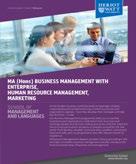



» Project Management

» Crea�ve Management
» Ad Space Management



» Mailing Management
» Print Management
• Annual Reports






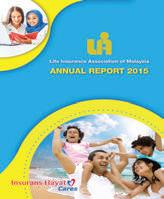


• Booklets • Brochures



• Bun�ngs • Business Cards

• CD / DVD Replica�ons




• Calendars • Cards & Invita�ons

• Cer�ficates • Custom Prin�ngs
• Envelopes • Folders

• NCR Bill Books • Notepads










• Leaflets • Le�erheads

• Paper Bags • Posters
• S�ckers • Others
























